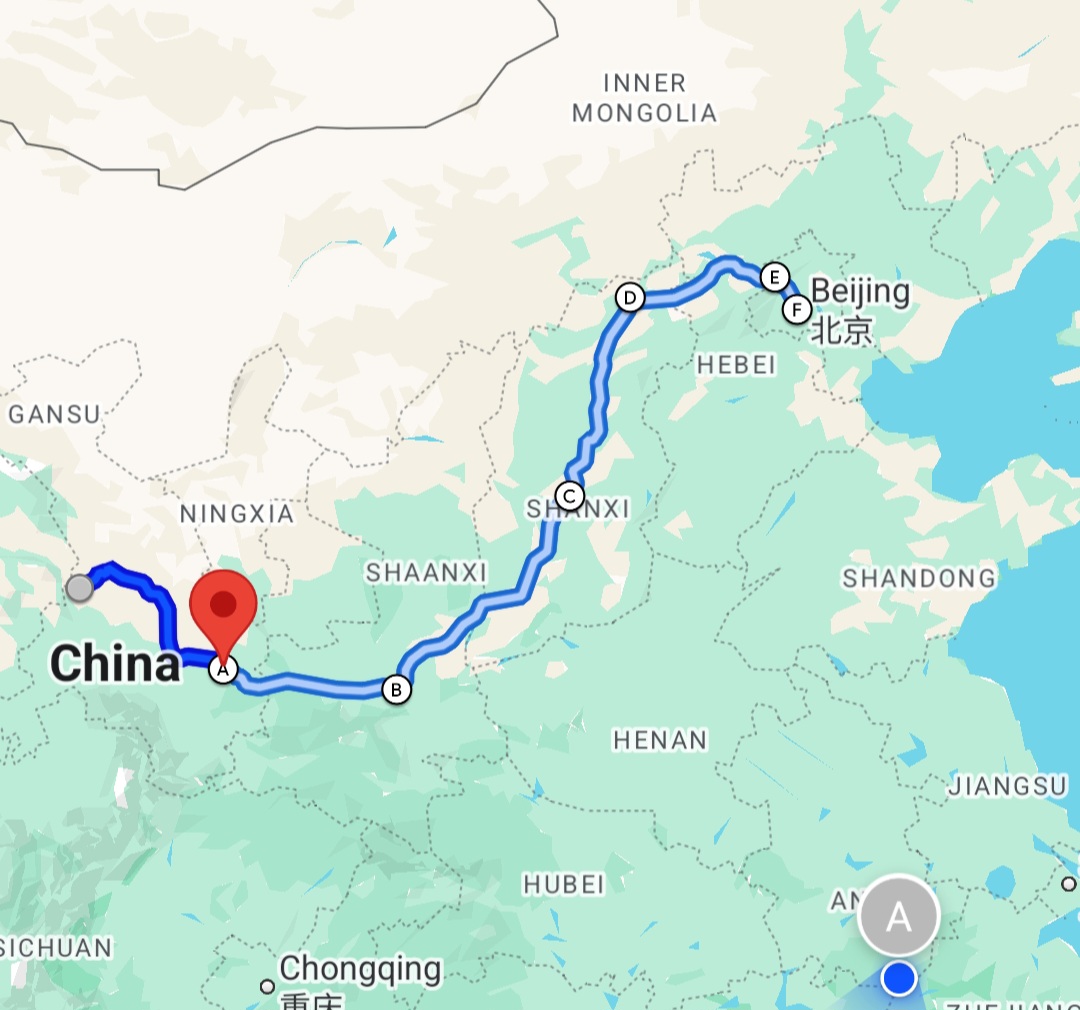About here the country started changing from desert to greenery. After weeks of desert suddenly there are green fields virtually all given over to crop growing.
Funnily enough having noted all the solar panels and wind farms along the route in the desert, I have just read that Chinas emissions have started going down despite increasing use of power. China has always been the high emissions nation so it may be that the tide is turning. Certainly they are increasing their renewable energy still we saw plenty of wind turbine blades being transported whilst travelling on the motorways.
Our next stop was Xi’an a walled city. However although it had walls and moat intact around it the centre was modern buildings with little remaining of the old city apart from the drum tower and the bell tower.

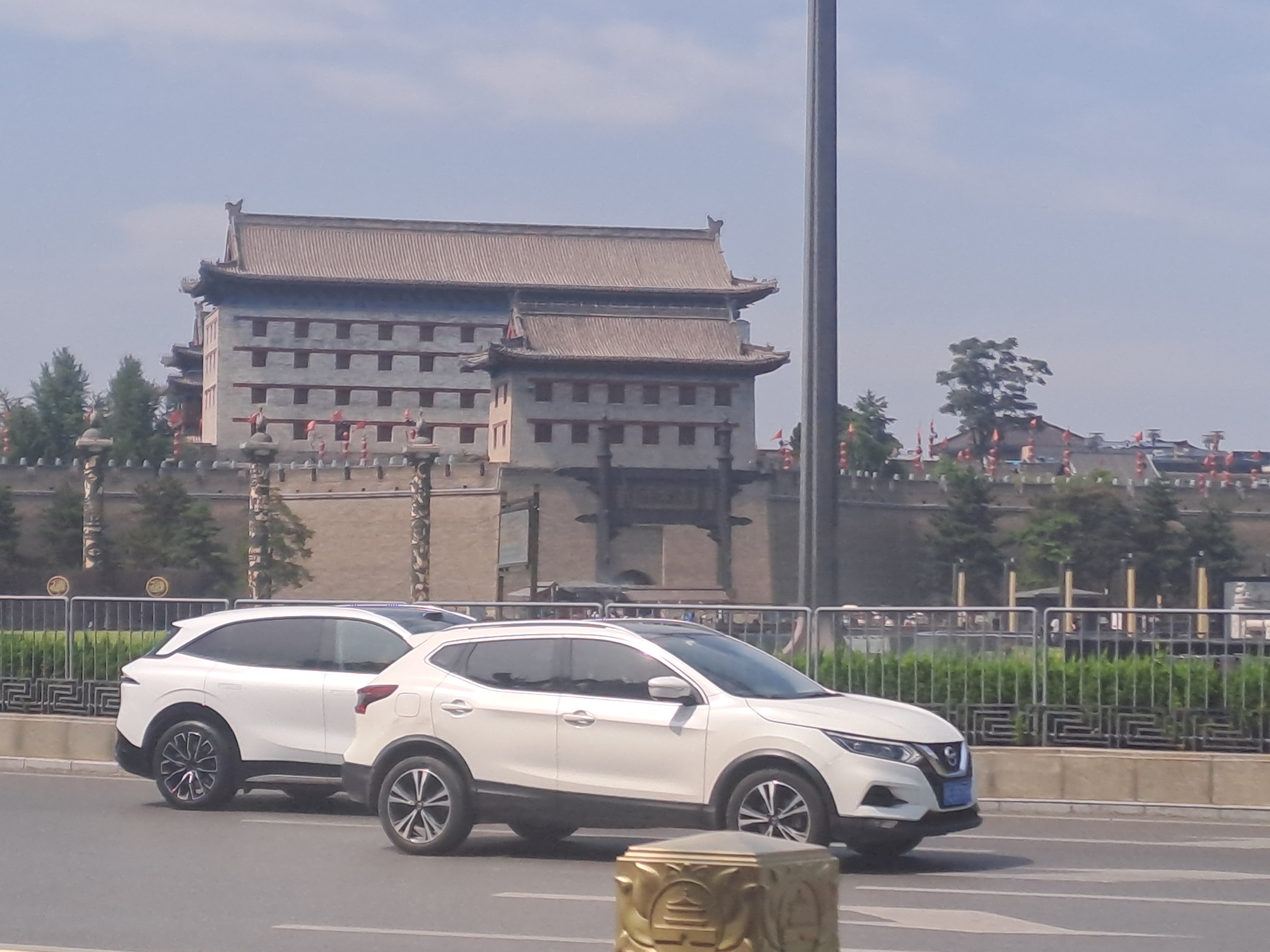
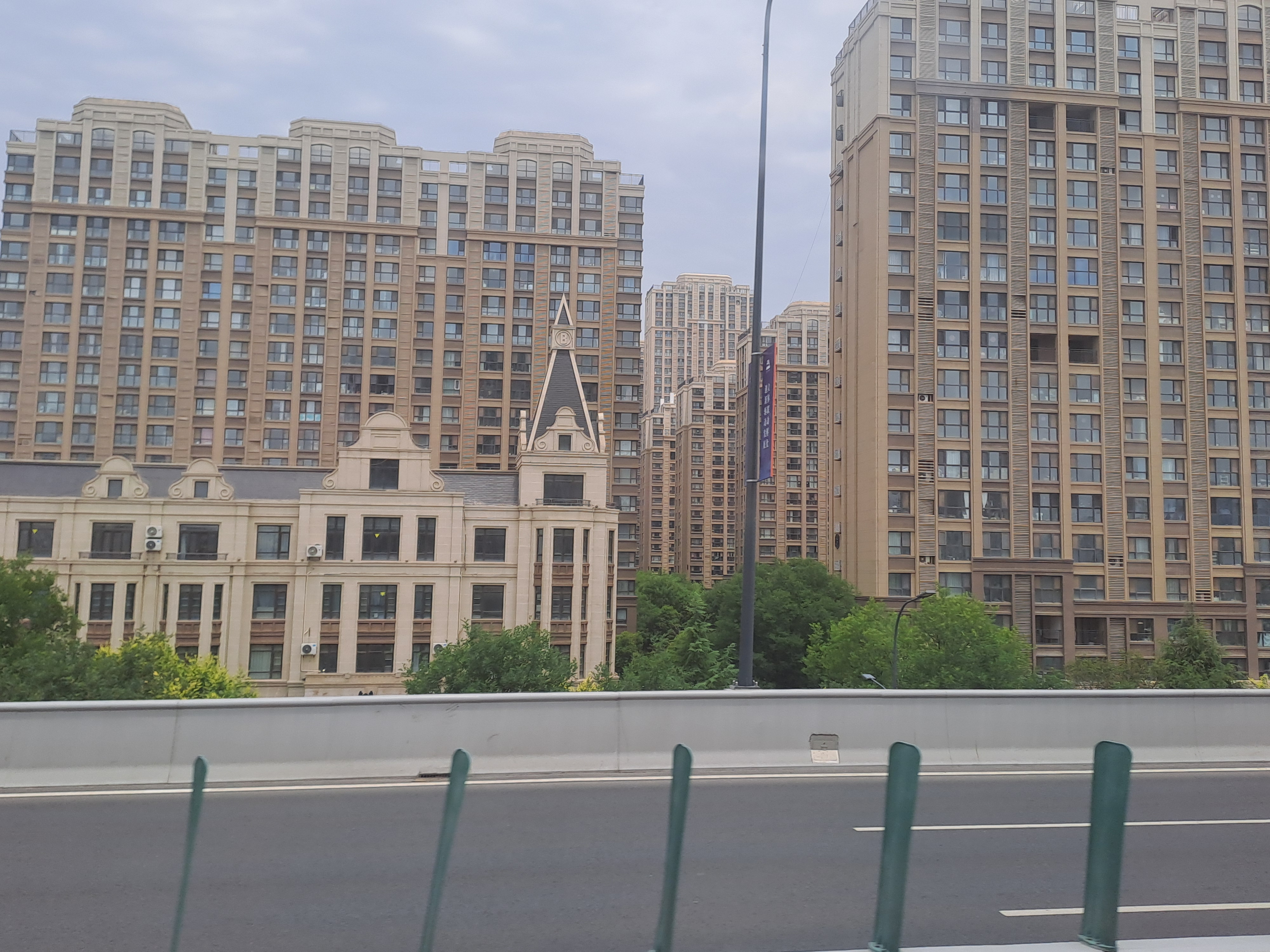
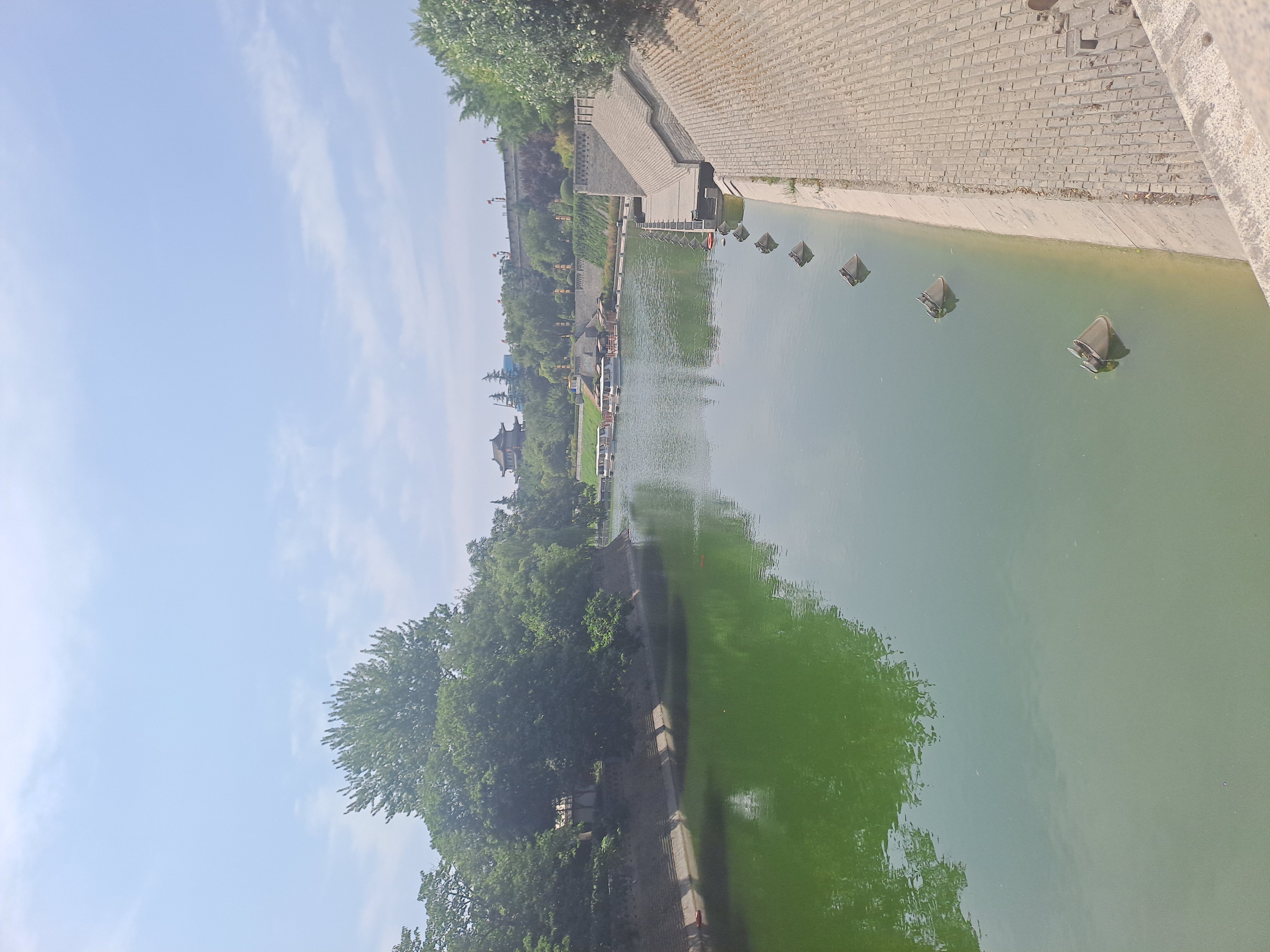
I decided to visit the drum tower as this apparently had a performance several times a day. It was a long walk but the exercise would be good. It was very hot and very tiring though. An hour and a half later I got there and was rather disappointed the small goose pagoda there was closed for refurbishment as was the drum tower and although I asked a couple of guides no one knew anything about the performance.
I decided to get a tuk-tuk back for the adventure, then I changed my mind and decided to visit the bell tower part way back as they also had performances. Outside a tuk-tuk driver hailed me and I was tempted but carried on sampling a cold peas drink along the way. However my determination wavered at the next tuk-tuk I saw and I decided to ride back.
What an adventure! I expected to be travelling along the pavement as many other drivers, mopeds and cyclists do. Not my driver! We headed off down some side streets, the wrong way up a few one way streets, the wrong side of the road along a street divided by fixed plastic post and then onto the dual carriageway on the wrong side of the road again, around a parked bus as wide eyed cyclists fled either side of us and finally onto a busy roundabout and from there to the right side of the road. He then did a U turn across the traffic to get me back to the hotel. You’d pay a fortune for that experience at a theme park.
I also saw Durian fruit here, I discovered it is exceptionally smelly and banned in a lot of places. I was keen to try it but couldn’t work out how to work it to be able to open it. Maybe at another place if I see it.
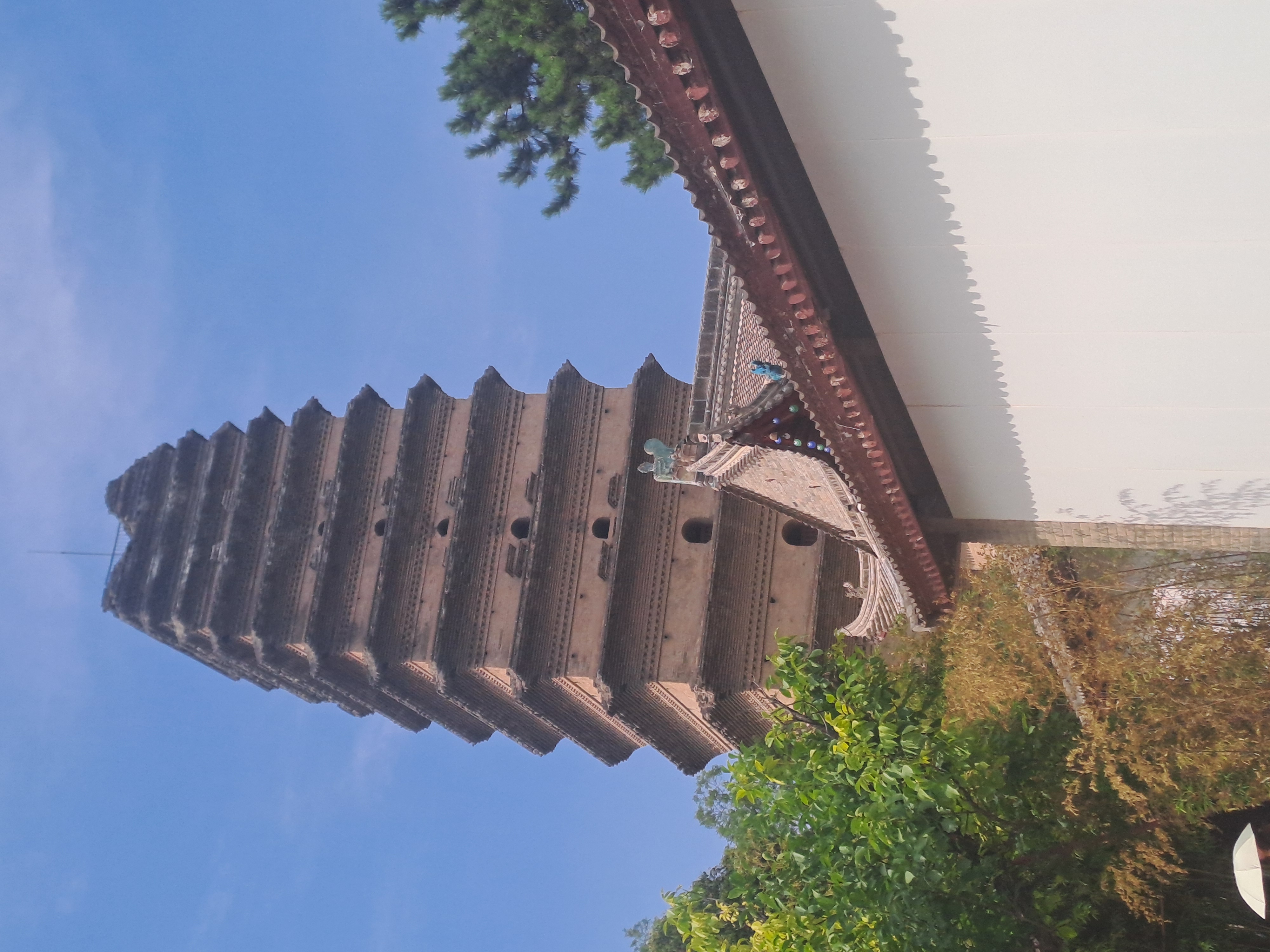


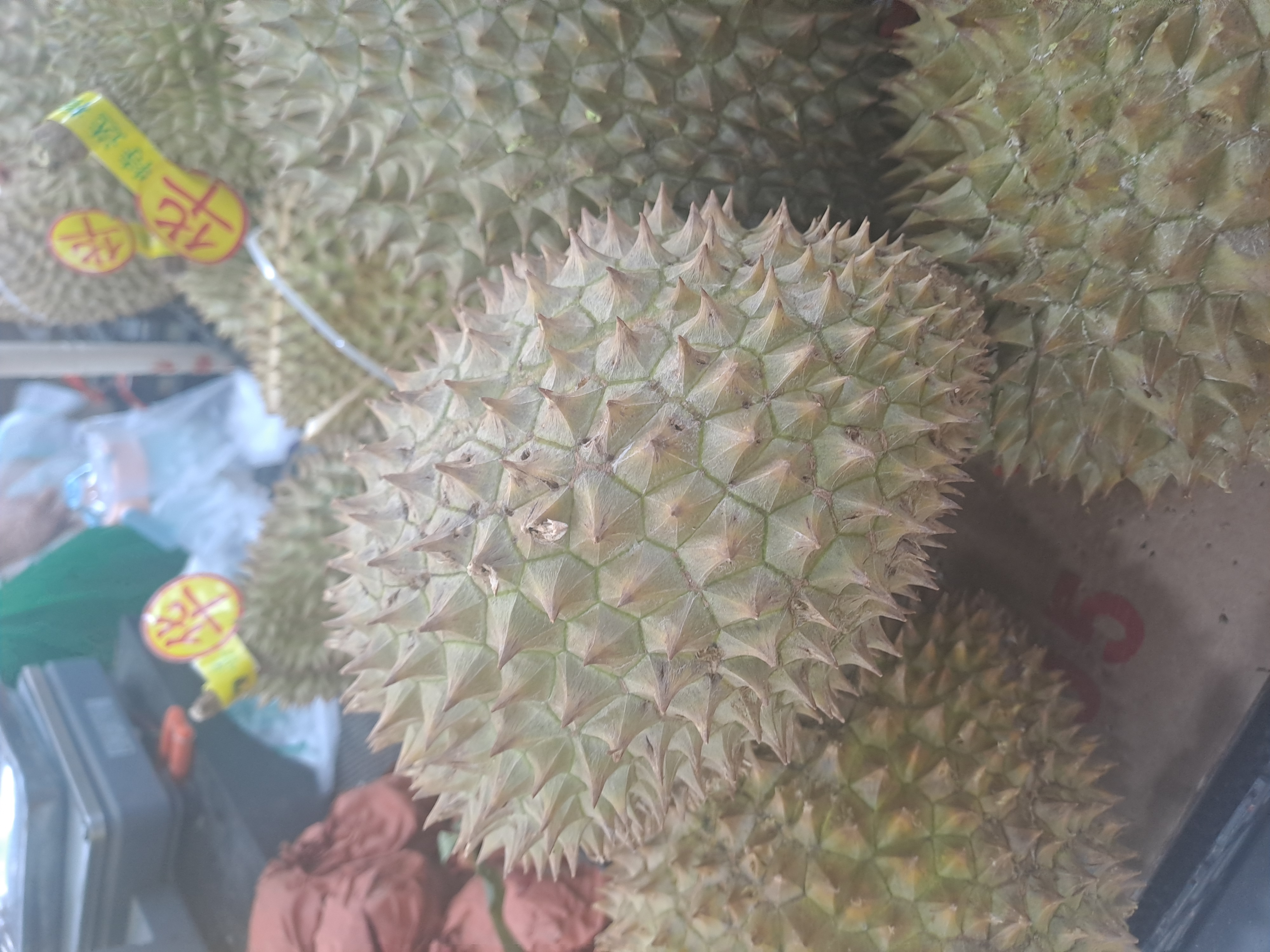
We were now getting to one of the highlights of the trip. The terracotta army originally buried with the first emperor of China 200 years BC to protect him in his afterlife. They were discovered in 1974 by a local farmer who was digging a well. The site is gradually being excavated and the figures restored where possible. Along with the army there are various other figures to help the emperor along in his afterlife,
This is one of the most popular sites in China, with numbers limited to 65,000 a day! As you might expect there were queues and the inevitable shuttle. We first visited a museum with some artefacts in including these horses and wagon. Then a shuttle back and another queue. Bizarrely in this queue we saw a girl with a budgie in her clear backpack. Not sure it’s the best way of looking after your budgie on a boiling hot day.


So on to the main exhibit at least two hours after we started. We walked into the hall and all I could see was a sea of people about five deep trying to get to the railing to see the pit with the army in. A bit of wriggling and manoeuvring and I got to the front. However the heat and the crowds had their effect I could hear shouting and arguments from the men on either side of me and hoped they didn’t come to blows with their respective antagonists.
It did get easier as we progressed around the pit and the crowds thinned out a bit. The warriors are all individual there are 10 main facial forms but each has individual features and there are slight variations to the uniform they wear as well. They vary between 5’9″ and 6’7″ with officers being taller, They were originally painted but this has mainly gone now. At the side there are some warriors facing to the side rather than the front to protect the flank.

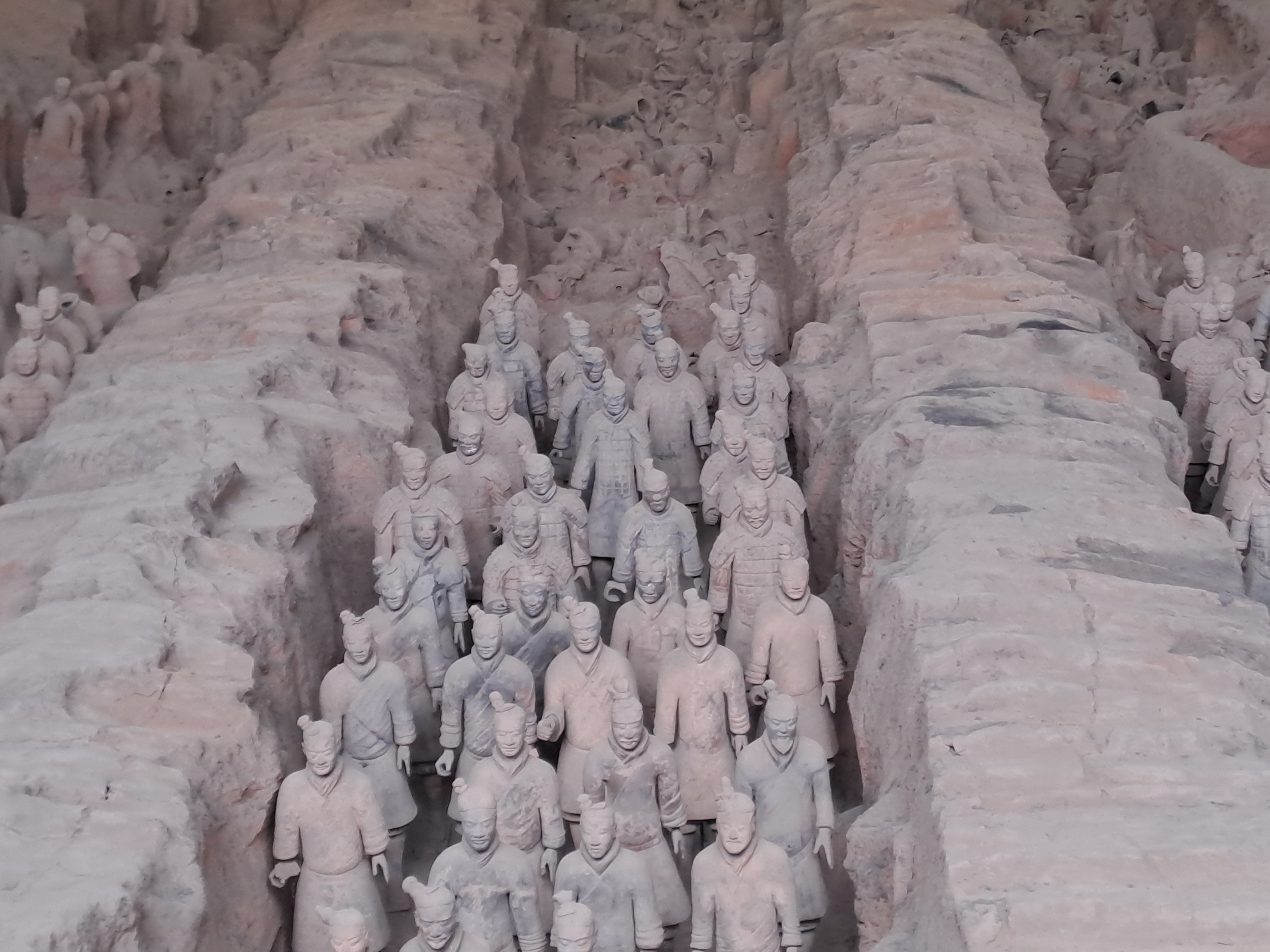
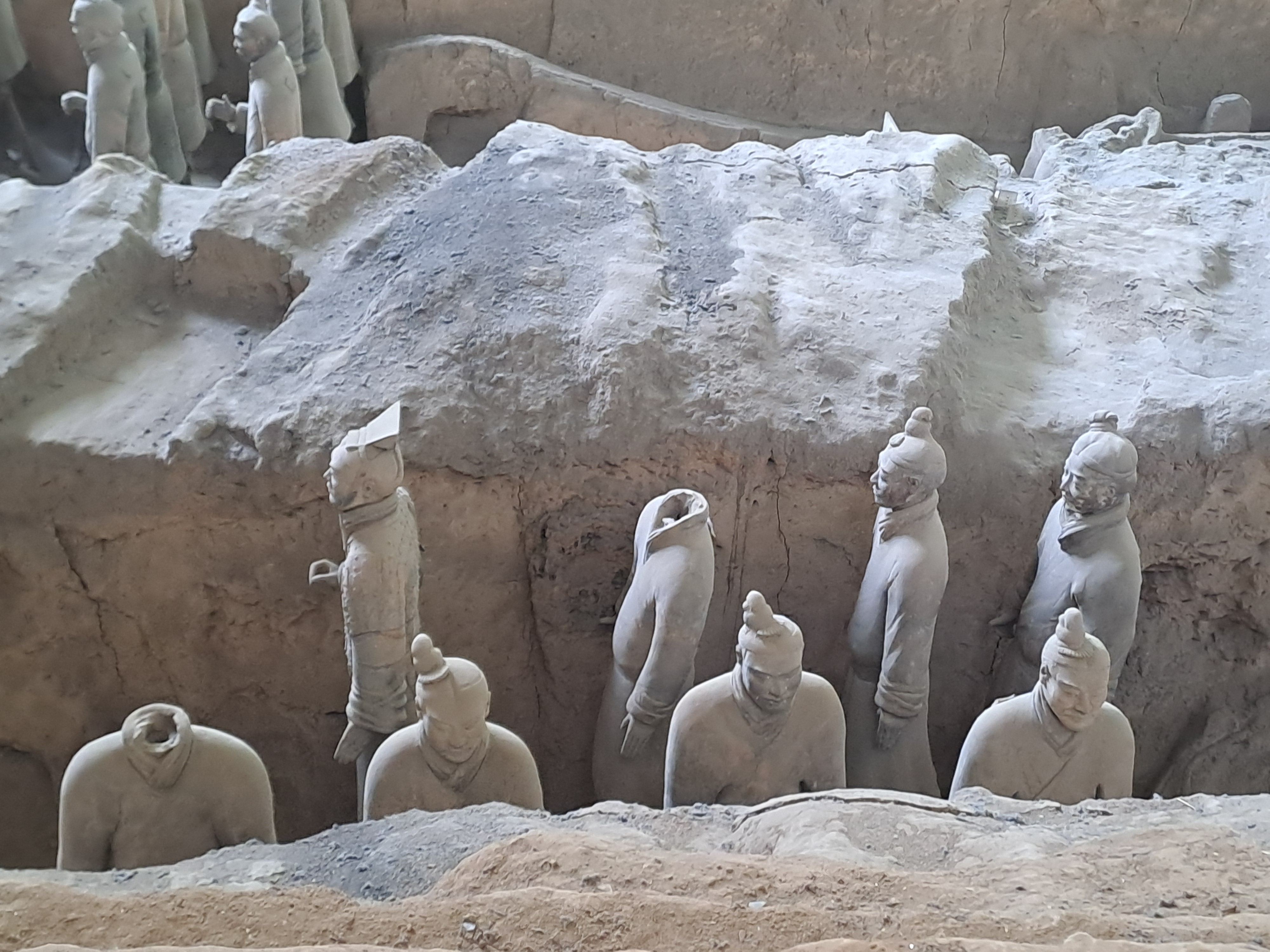
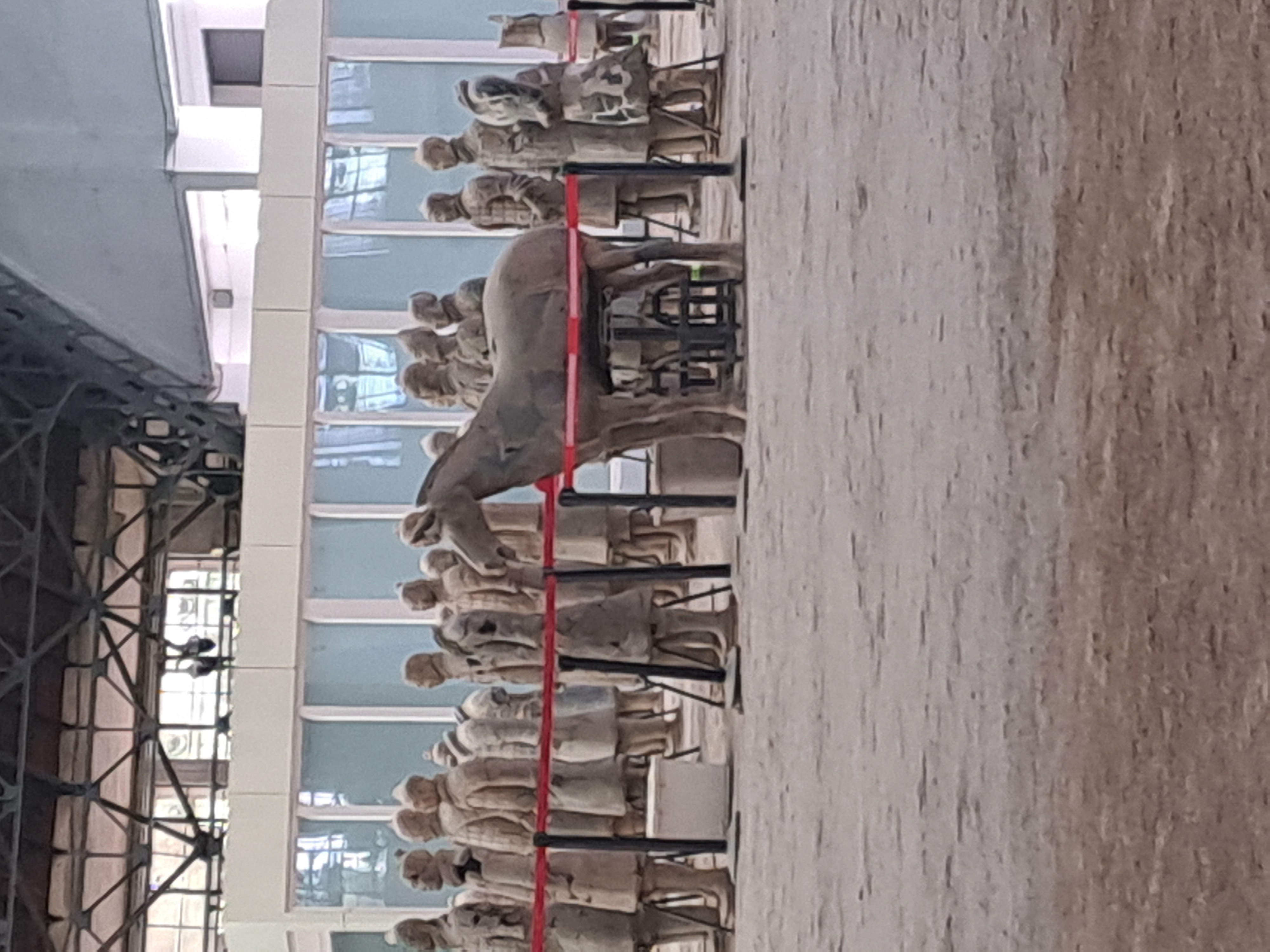
Although it was a fantastic experience seeing the Terracotta army and we are so privileged to have been able to see it, I think everyone was a bit disappointed by the overall experience and the crowds and wondered if it could have been managed differently. Those who had been previously said that it had been a lot easier a few years ago. Still at least we got there before the summer holidays started it could have been worse .
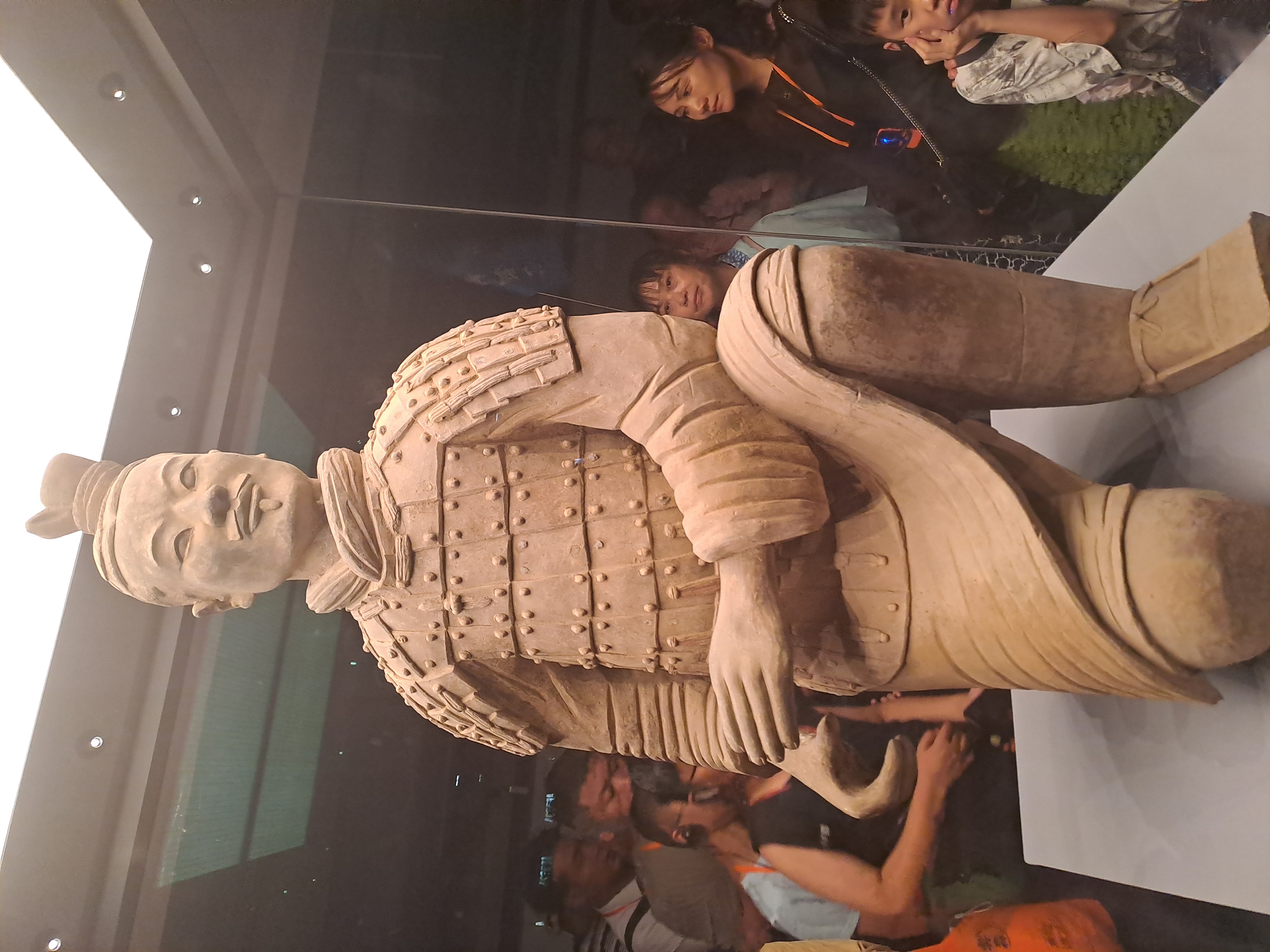



After this we went to the quaint town of Pingyao. The truck wasn’t allowed in and the transport internally is by small shutttle buses. Due to the small streets you constantly have to look out for these. An inner section is pedestrian only. There are a limited range of shops we discovered. Costume shops for those wanting to dress up for the day for photos, vinegar shops – aged vinegar being a speciality of the area, massage shops, food restaurants and souvenir shops.


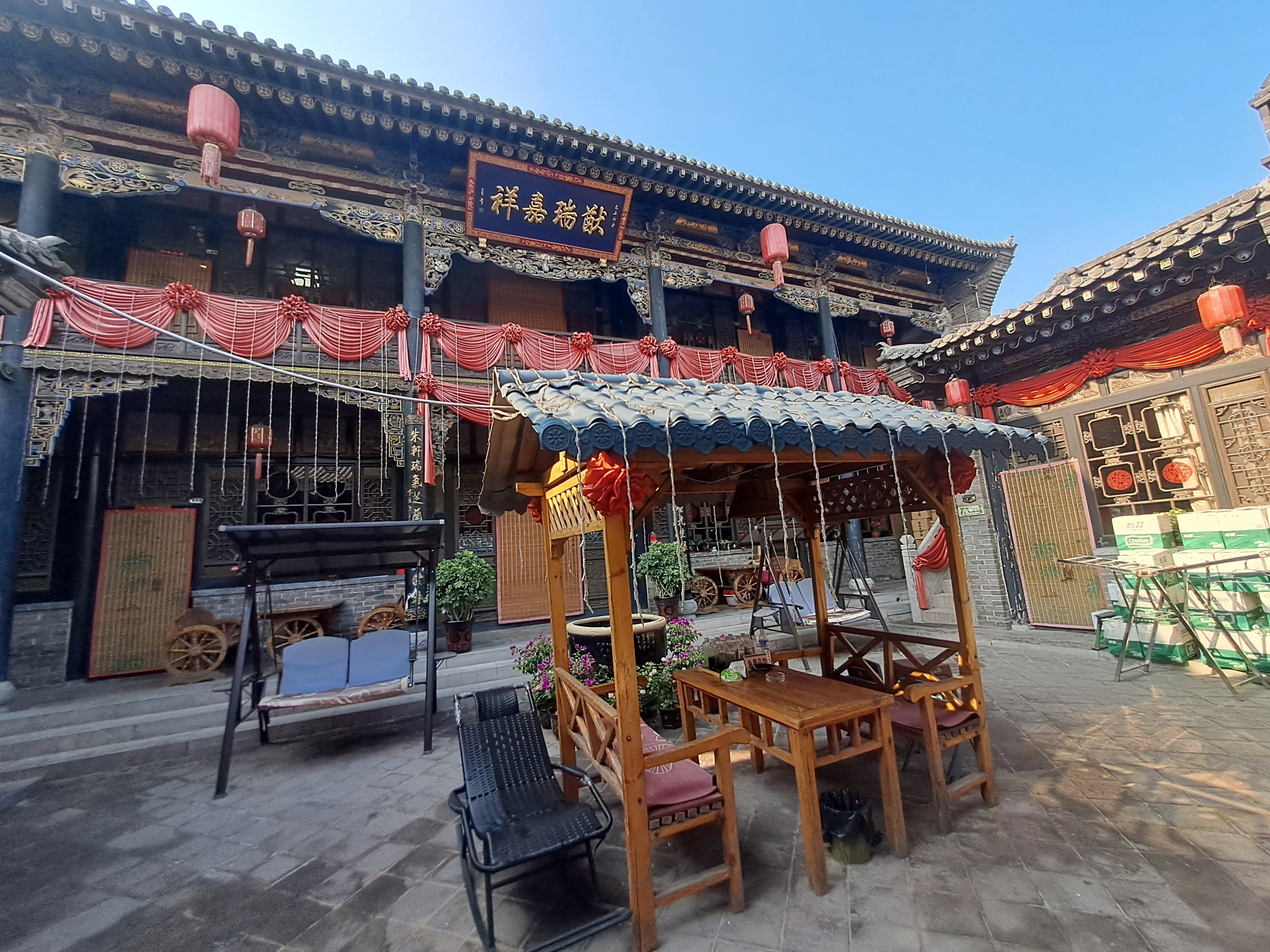
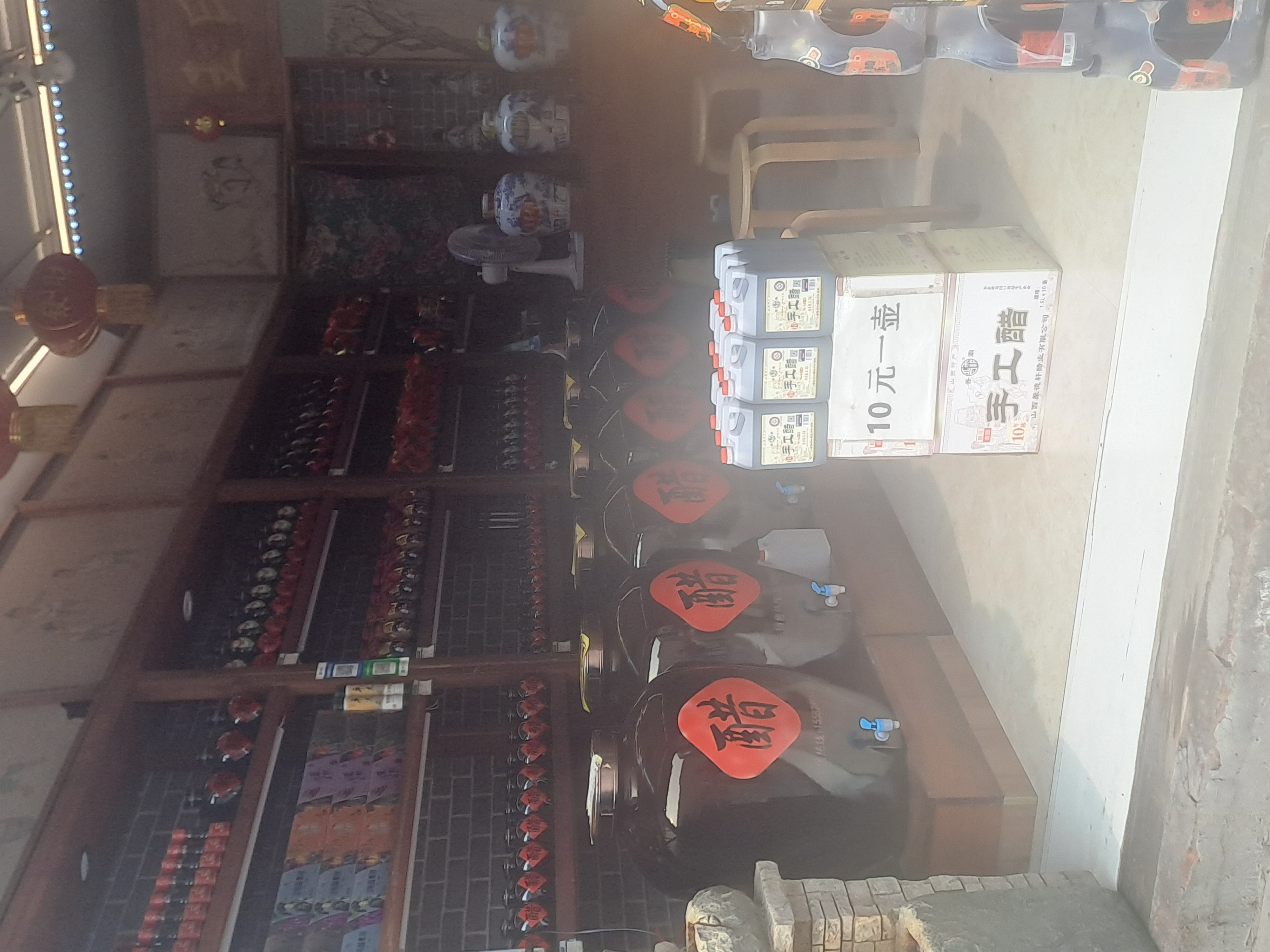
The town is quite quaint with various old buildings such as the palace and various temples. Bizarrely we saw a mini pig in a pig meat shop. I’m sure the mini pig was a pet. Mini animals seem popular here.

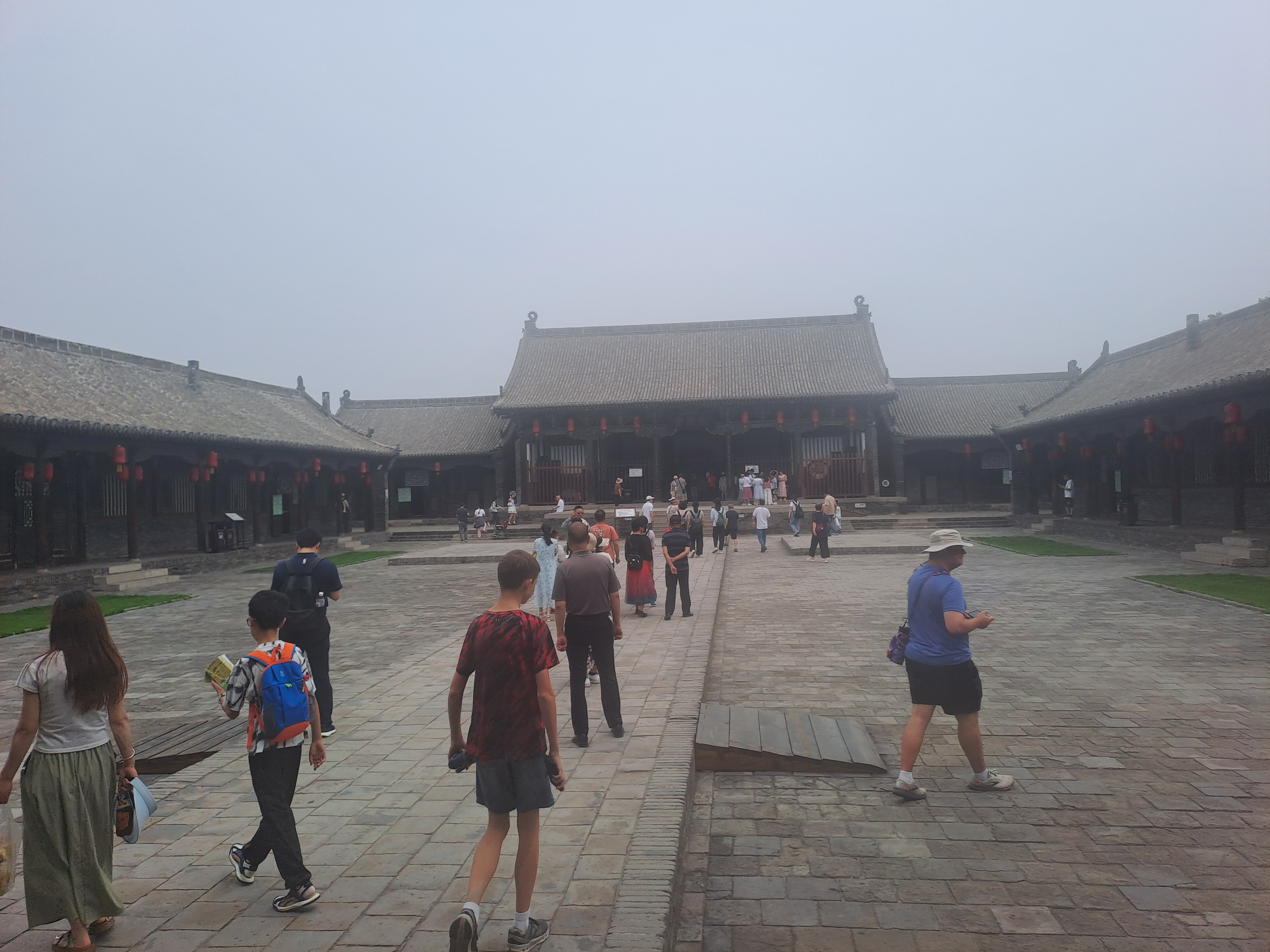

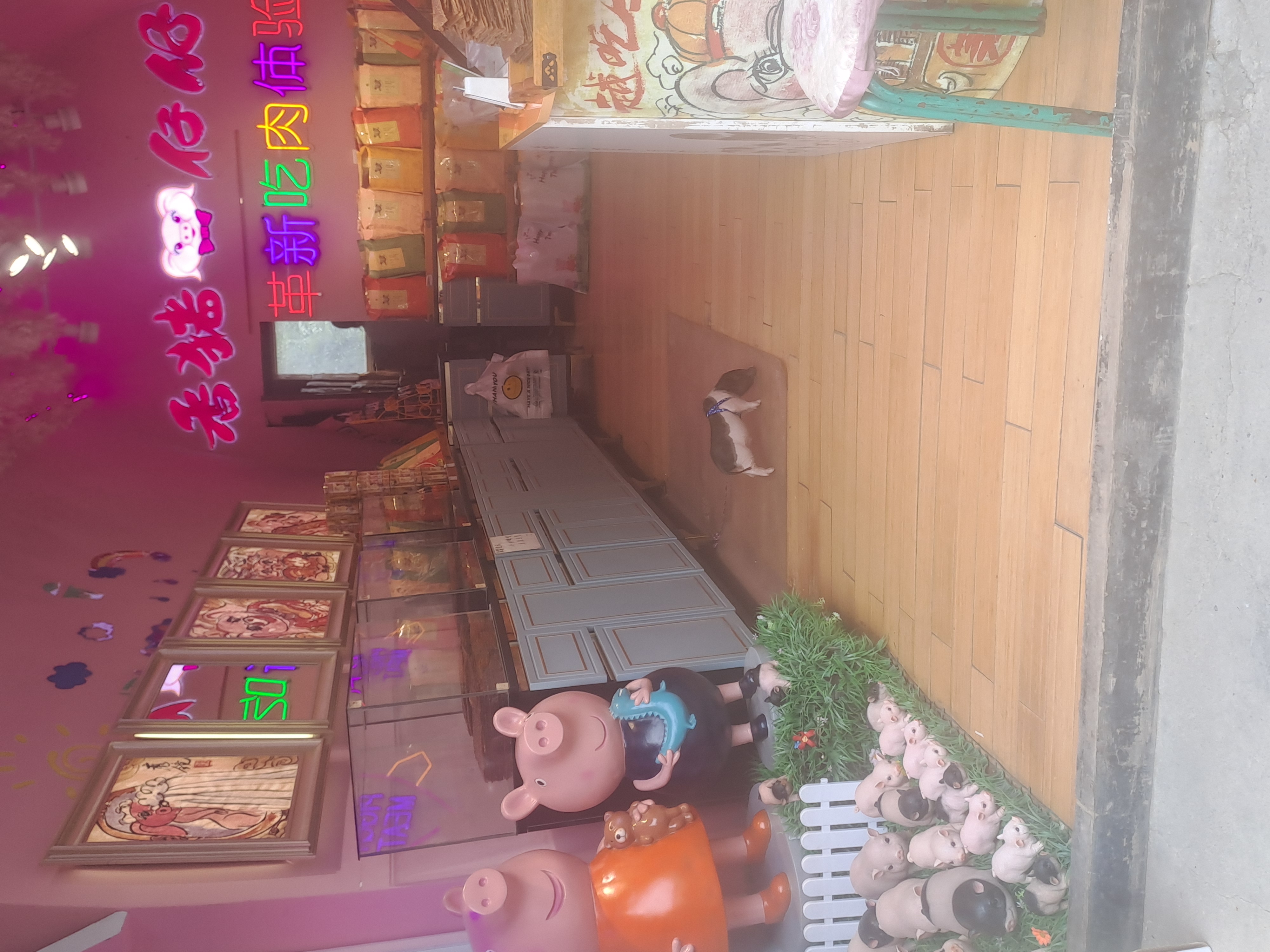
We went to see the Buddha temple with various zodiac signs displayed as sculptures.
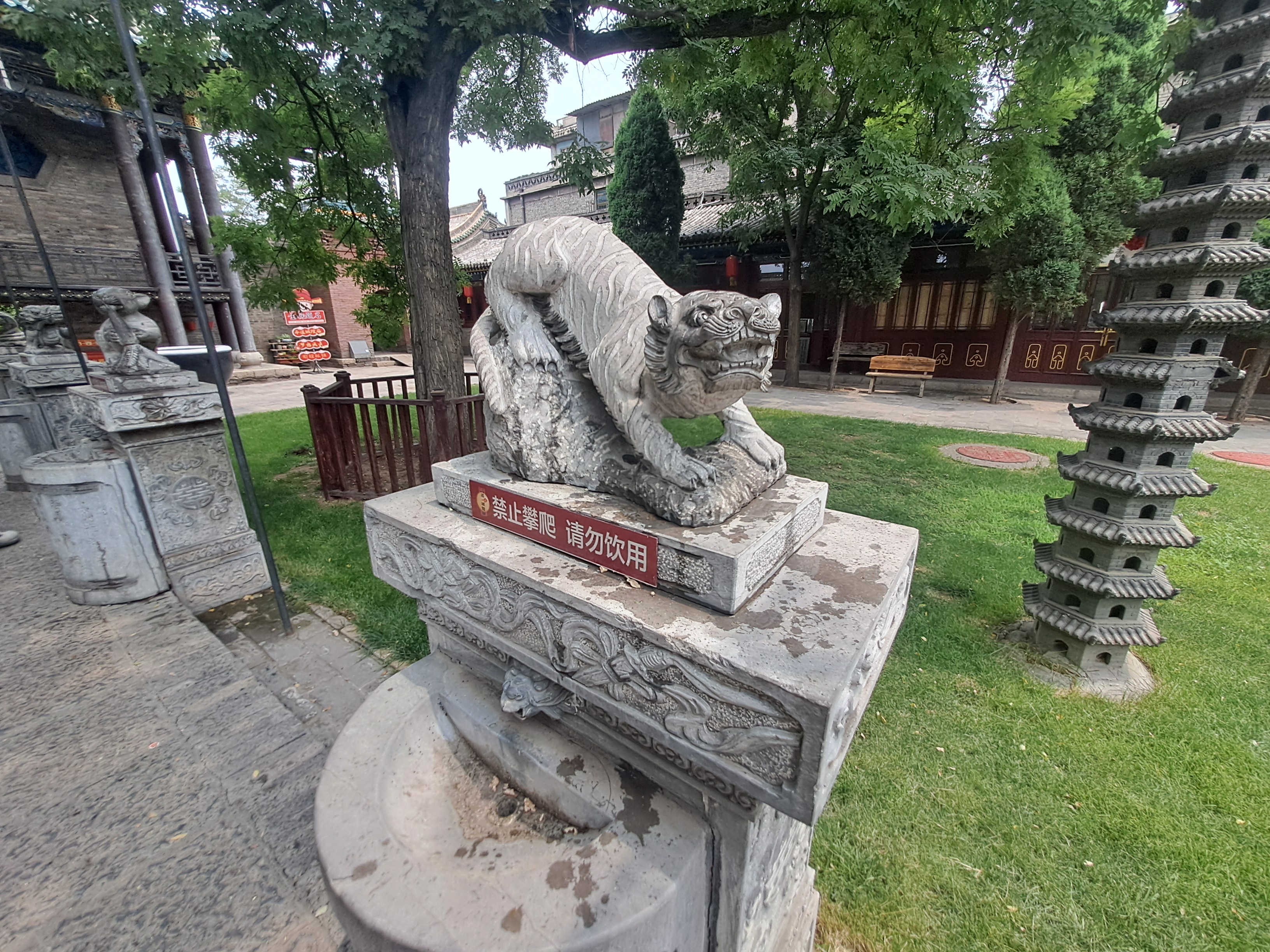
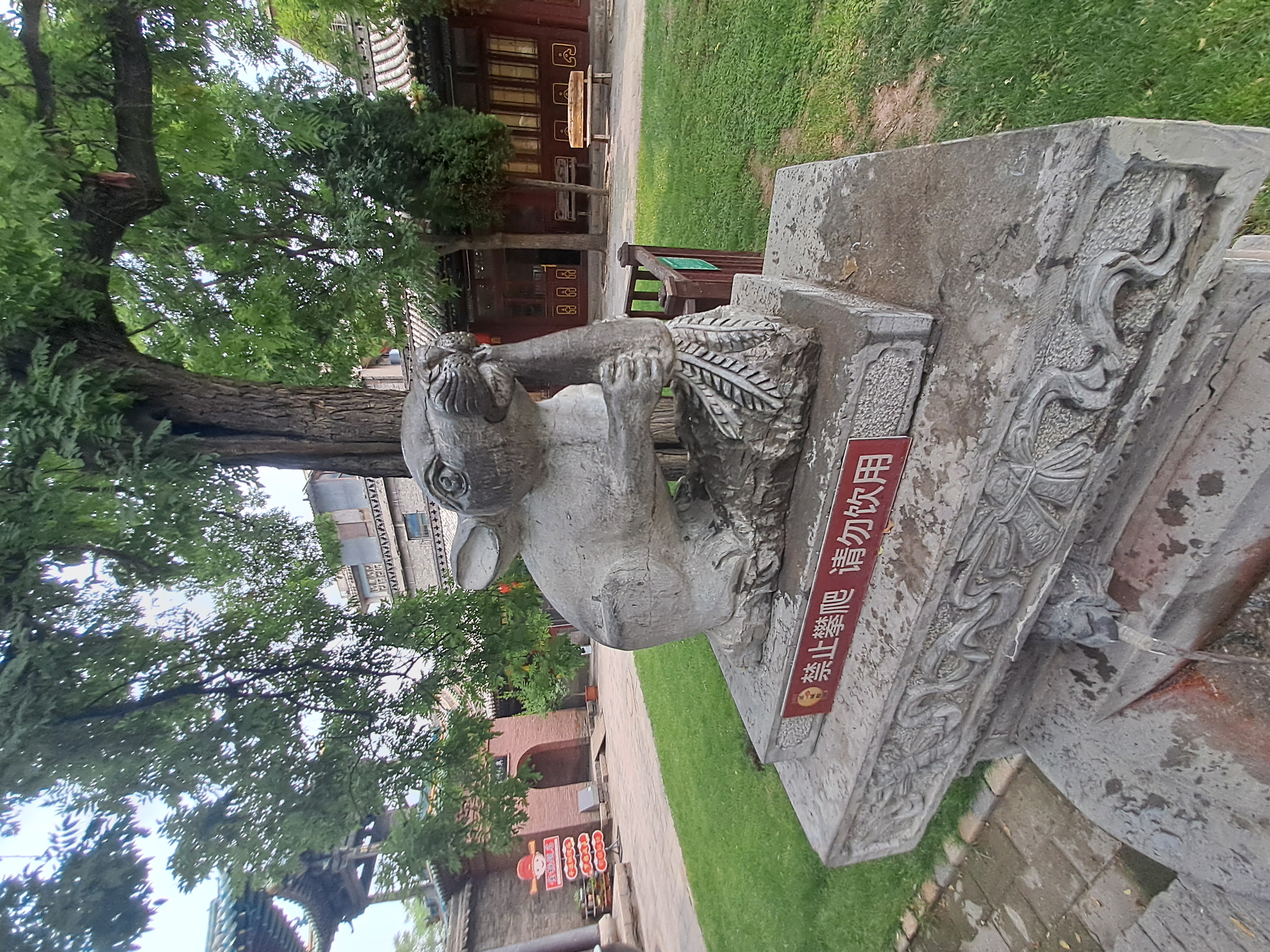
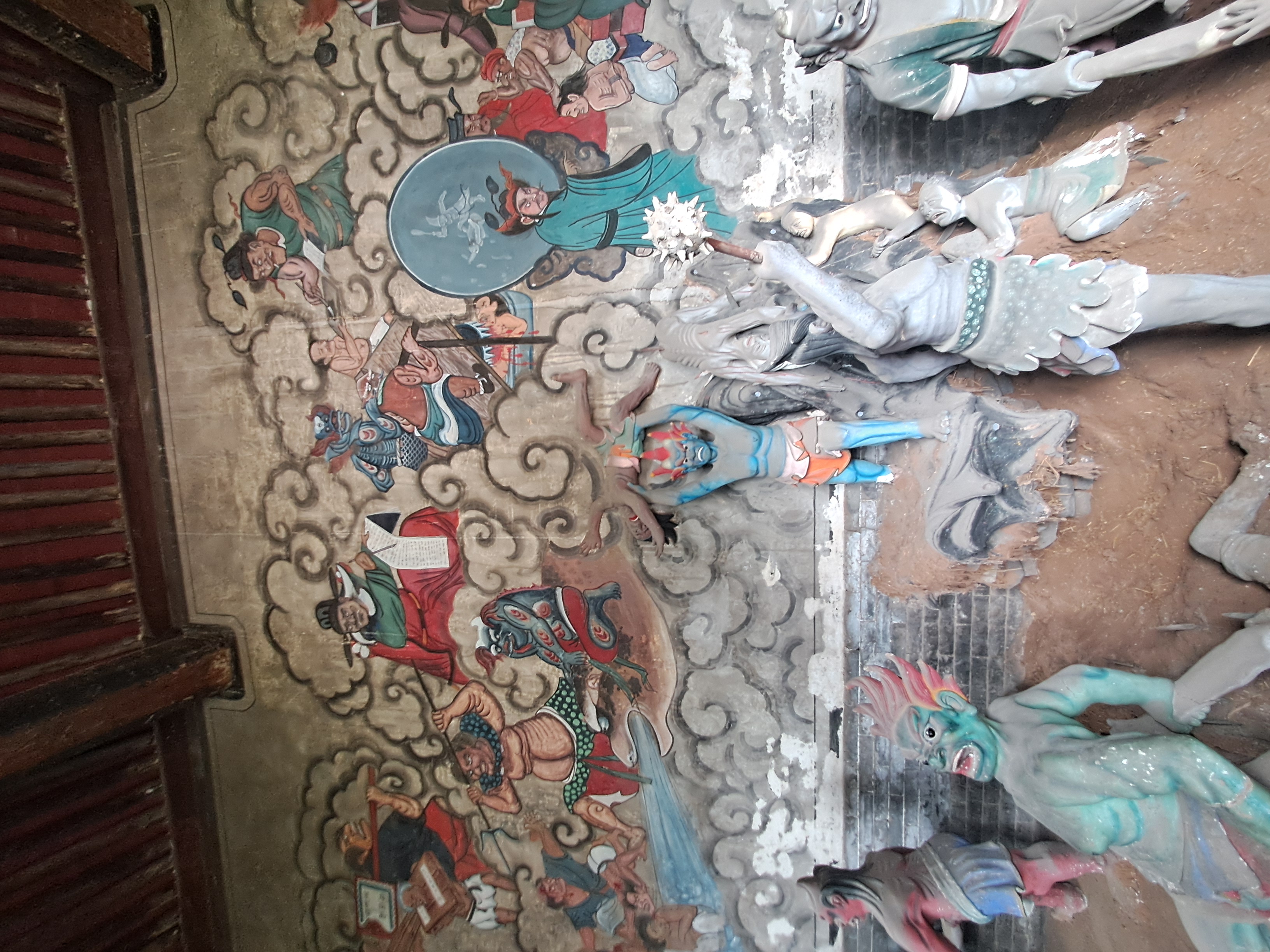

We also went to the Confucius temples where we saw a mother showing her children how to bow properly. Talking to our guide I discovered the method depends on the religion.




The costume shops have been popular since Xi’an where there was one in the hotel. We see mainly women dressed up at a lot of the attractions often mother and daughter or a couple of friends.

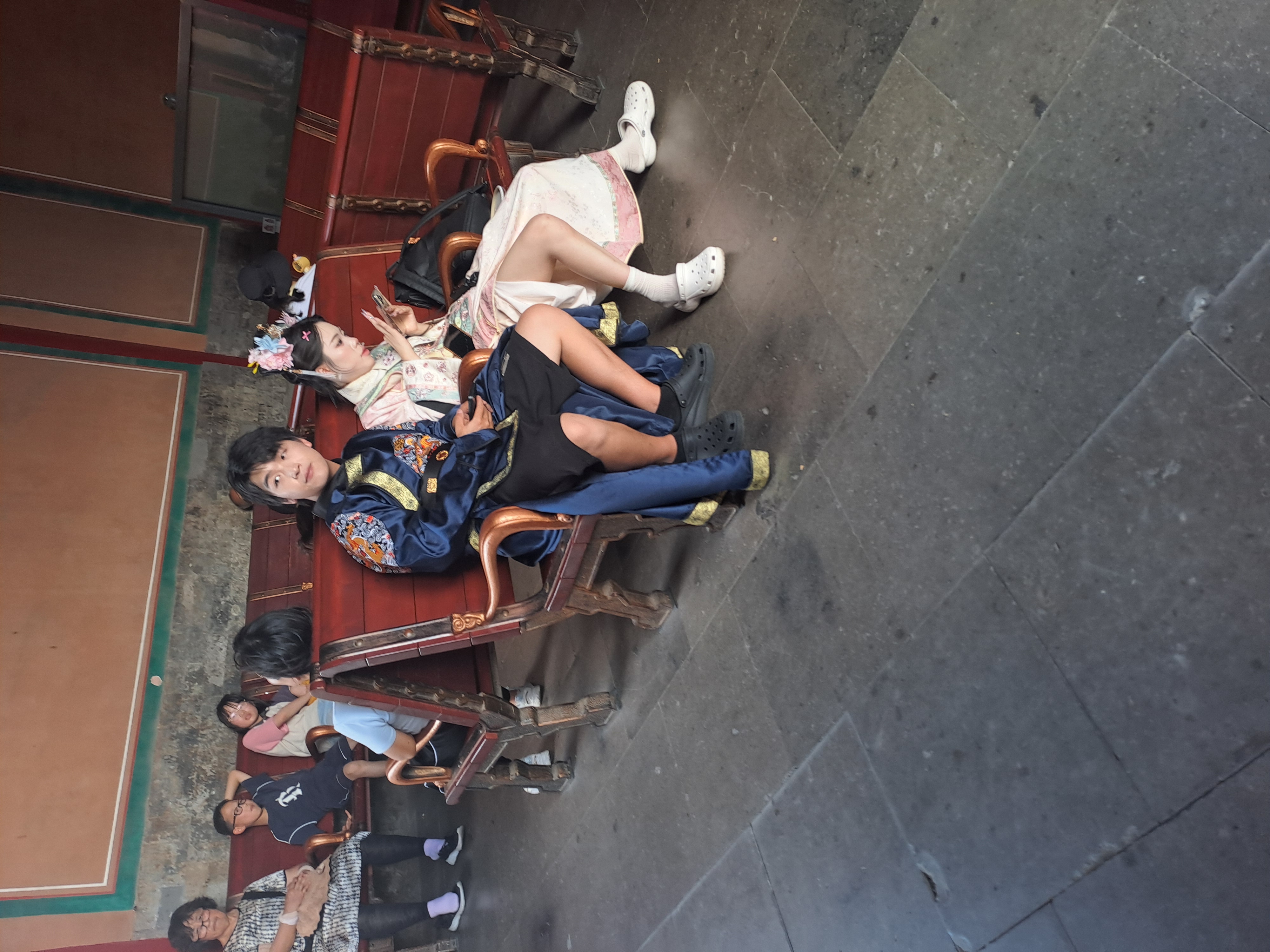
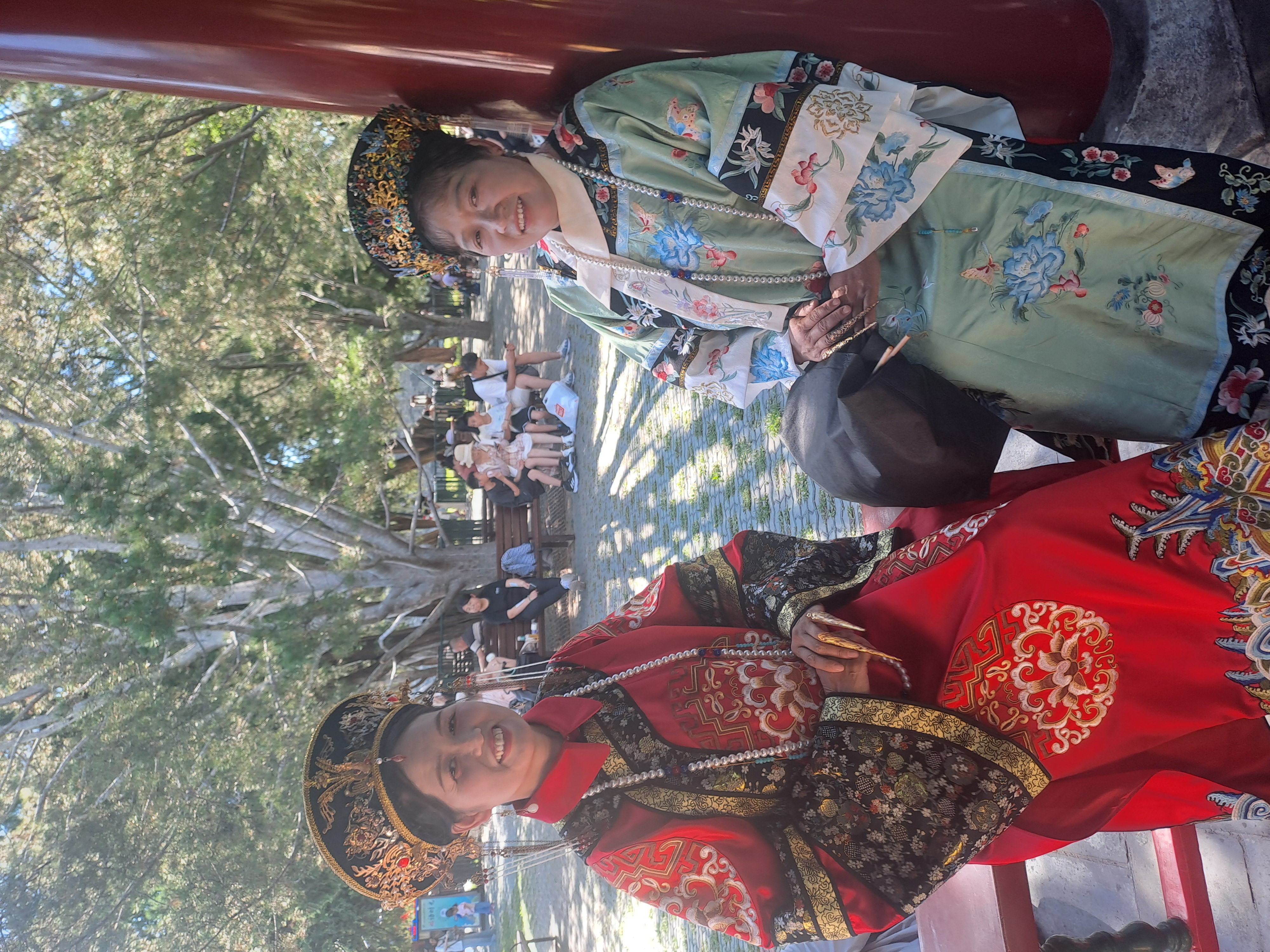
On again to the hanging monastery at Datong. Still a working monastery. The journey up wasn’t as bad as it first appeared. The structure is supported on 27 bamboo cantilever beams soaked in oil to protect them from insect damage. The mortise and tenon joints allow movement during earthquakes to the structure can be elastic and move so that it doesn’t collapse. although the wooden struts were added to make it look safer. It is over 1,500 years old.




The monastery was a series of temples to the three religions of Taoism, Buddhism and Confucianism where they are united with the three religion heads displayed together.


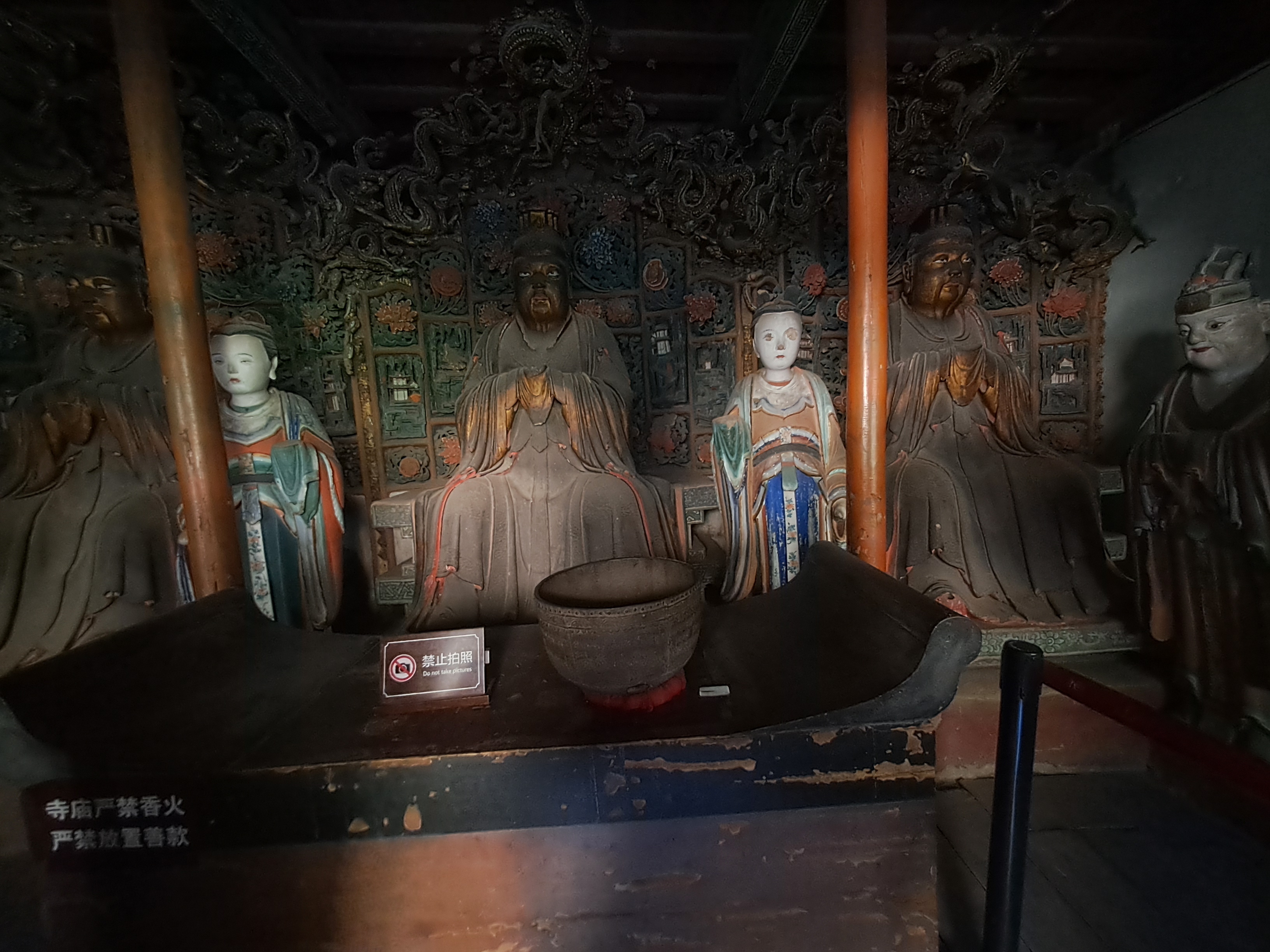
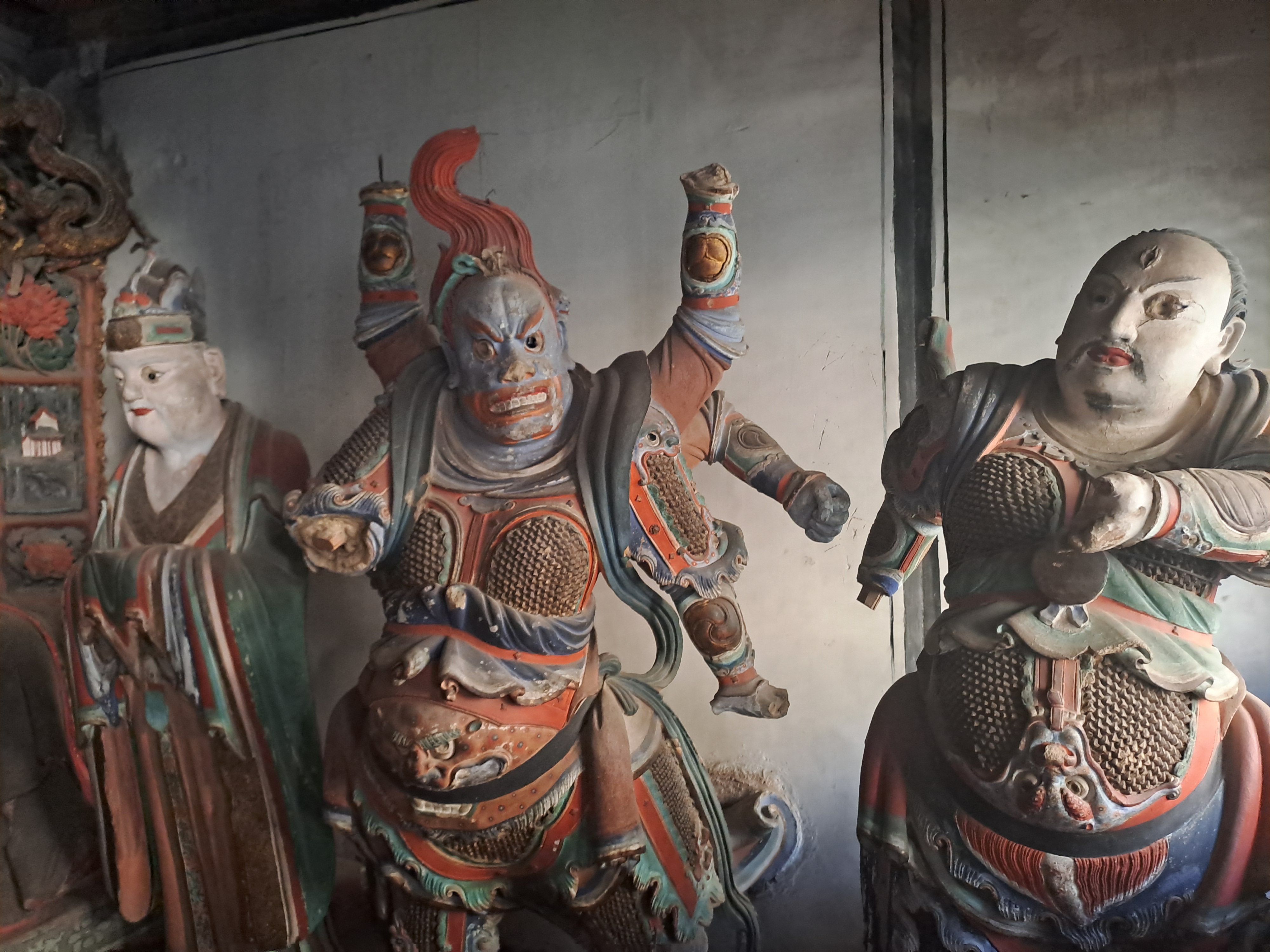
It was an opportunity to get a close look at the ornate roof structure.


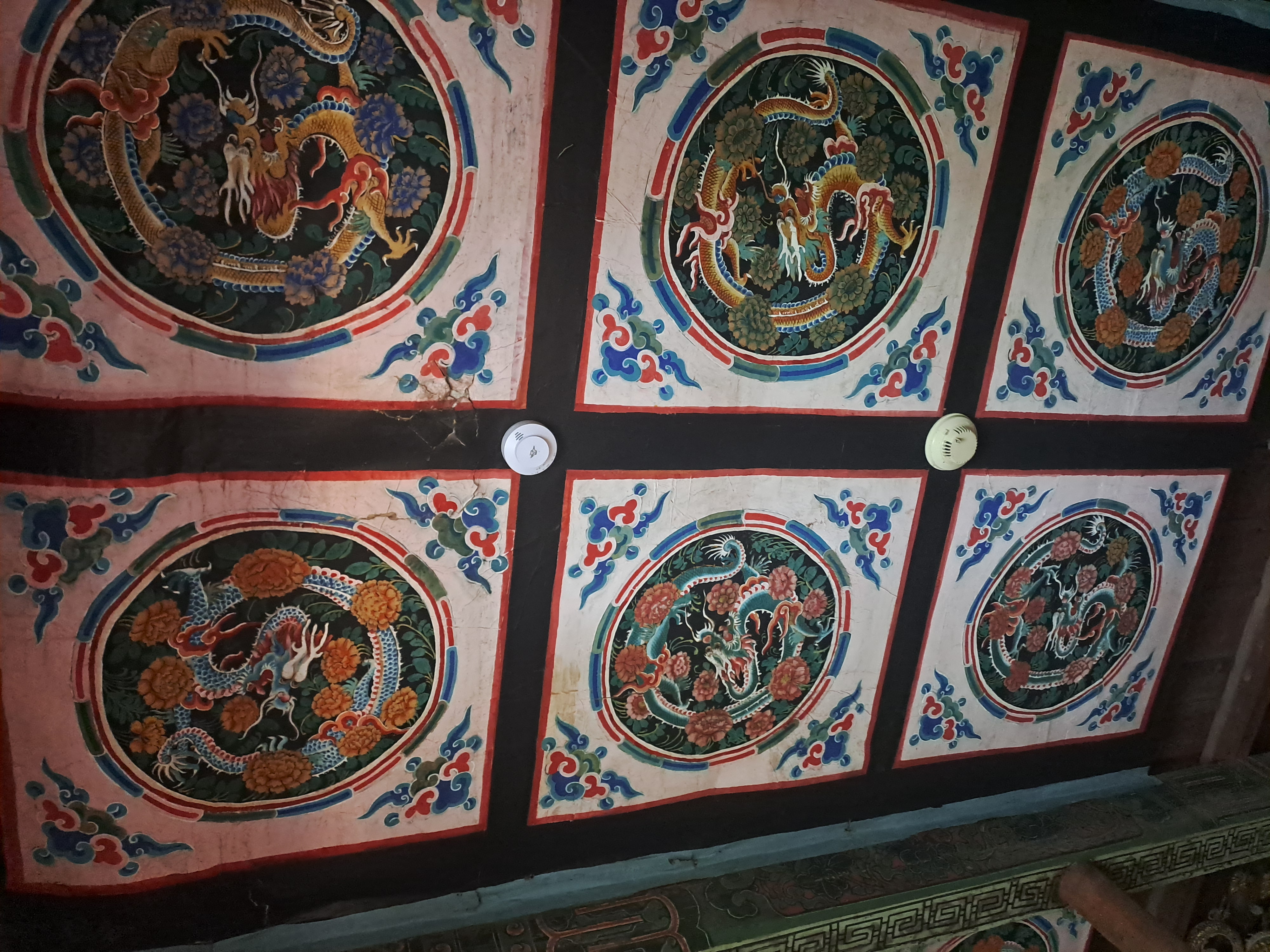

Also in this area is the Yungyang grottos. Some more caves carved out with Buddha figures. These were all more or less at ground level and varied from small and simple to massive and complex. They are of a similar age to the hanging monastery. There were of course queues for the main caves, although these reduced the further we went. At one stage I saw what I thought was a queue for a cave but discovered it was a queue to take pictures at particularly popular location. At this location everyone faced the cliff and held their hands up in prayer. At other places I saw other popular poses which were quite different.
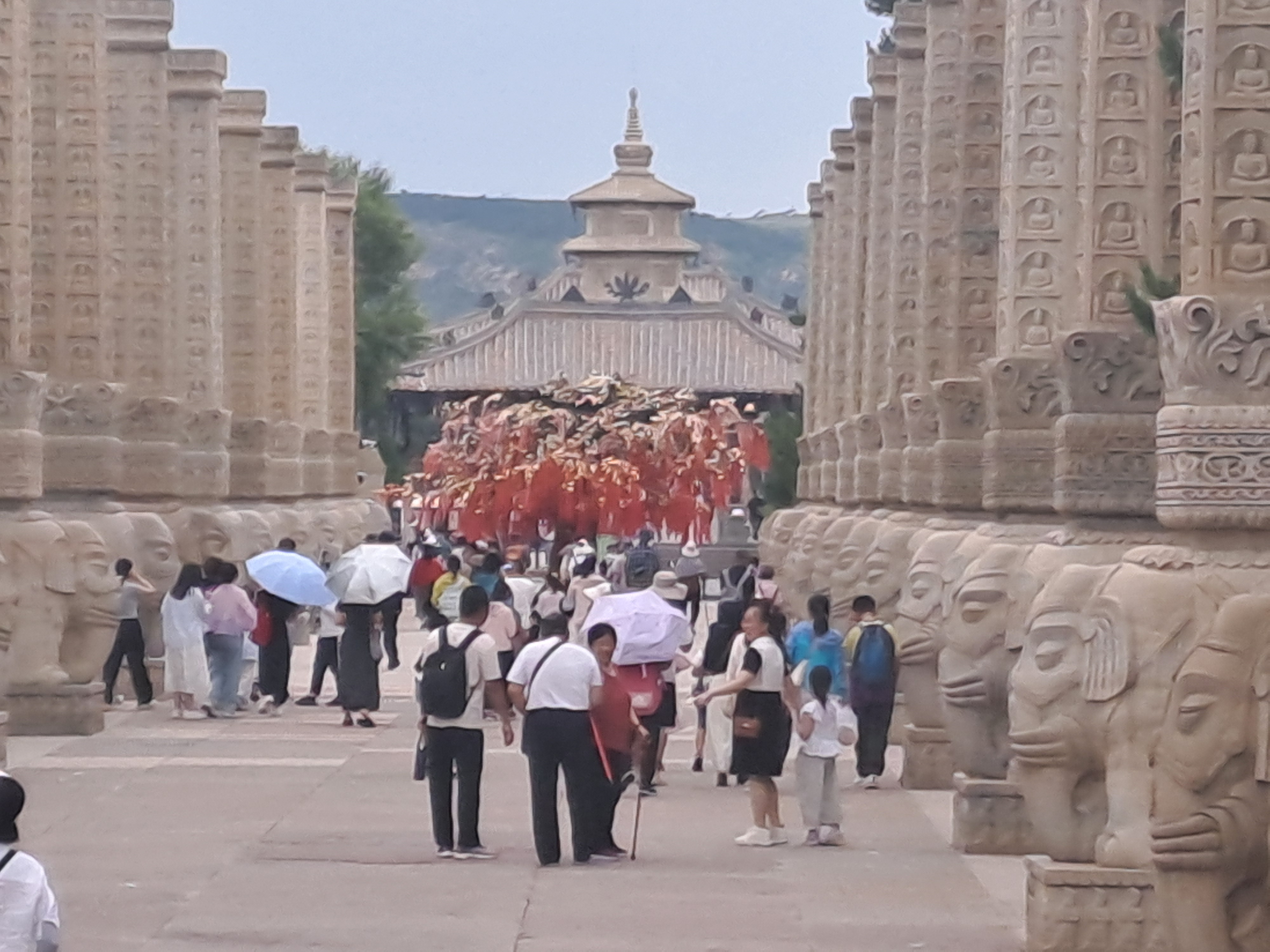



The art was extraordinary through the caves and as before I wondered how the massive carvings were meant to be appreciated from within the cave.
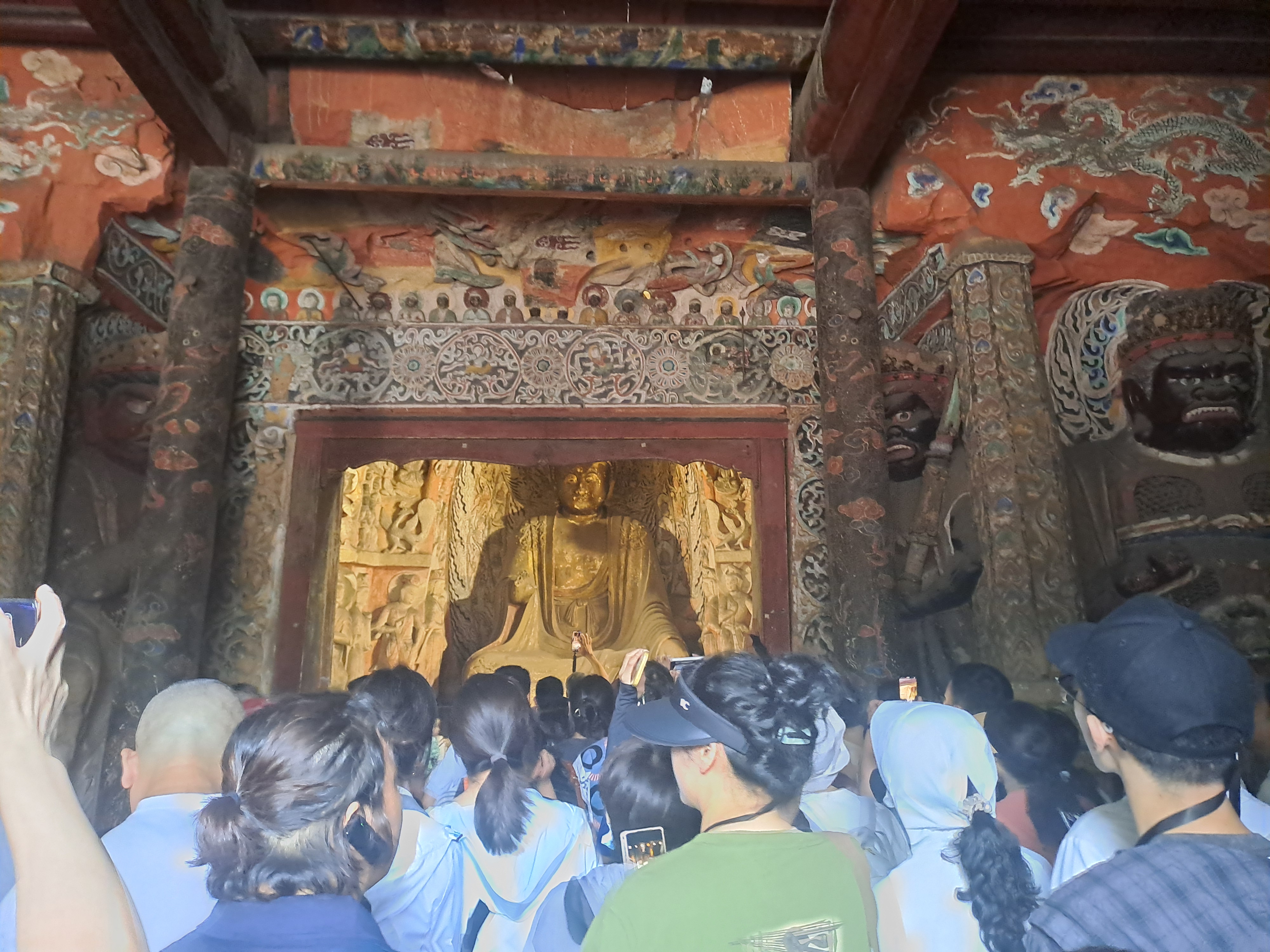
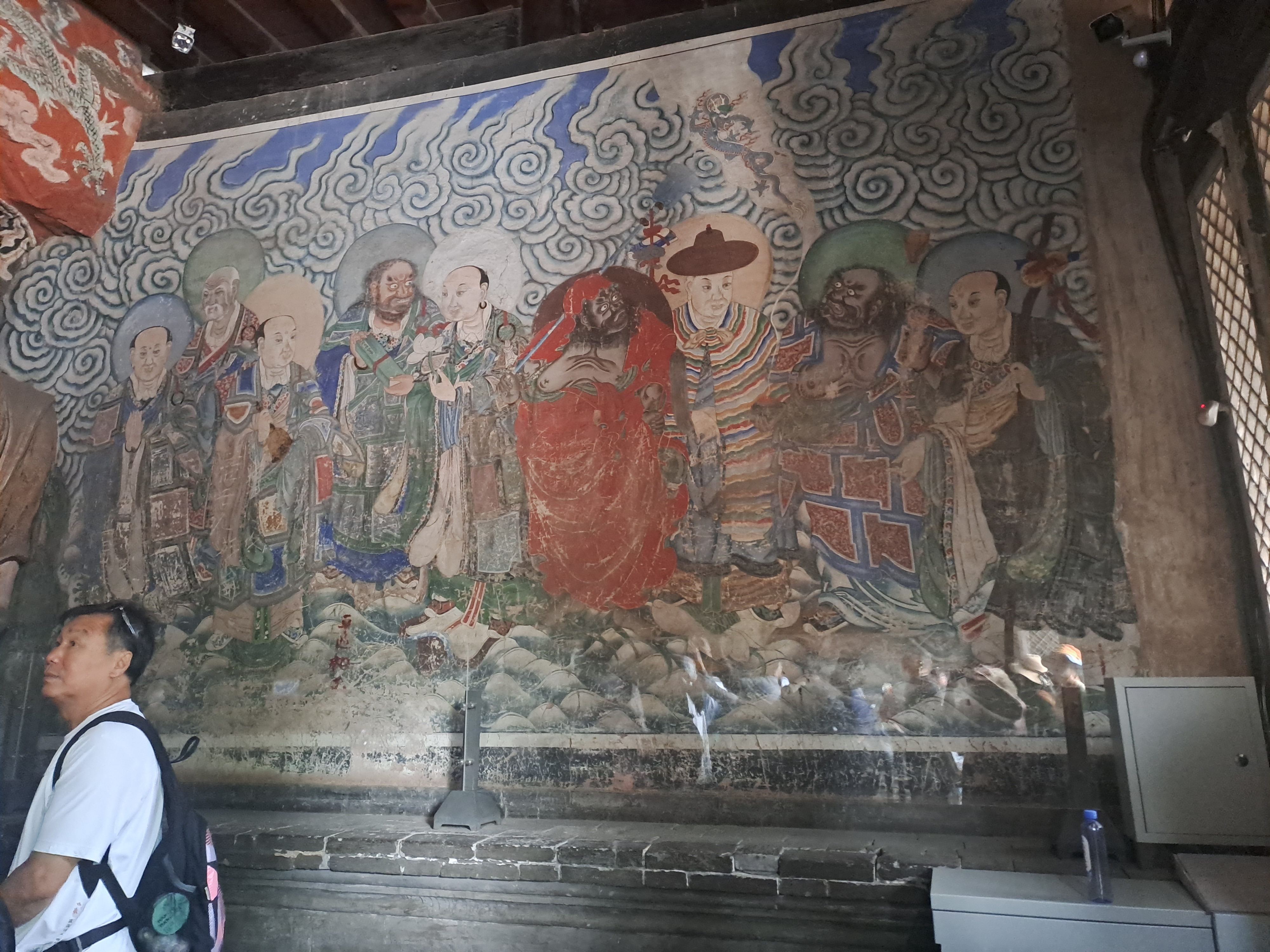


We went out to Datong in the evening. This is another city with a wall but sadly inside is filled mainly with modern buildings. We saw the 9 dragon screen wall which has been moved from its original location. This would have been the view coming through a gate into a palace.
This town also has the bell tower and drum tower intact. These were used to tell the time for the inhabitants as the bells rang or the drums beat, depending on the time of day.
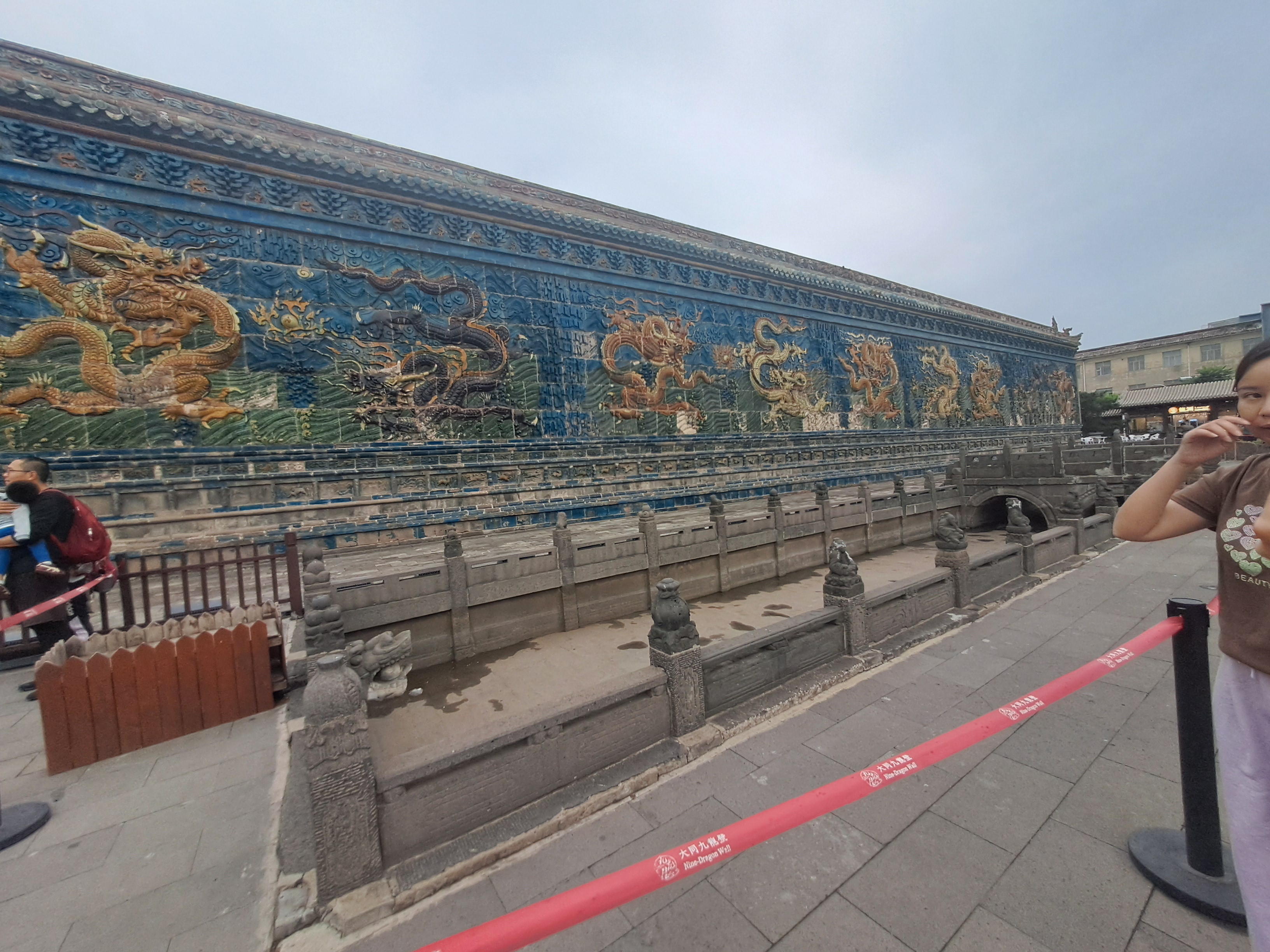

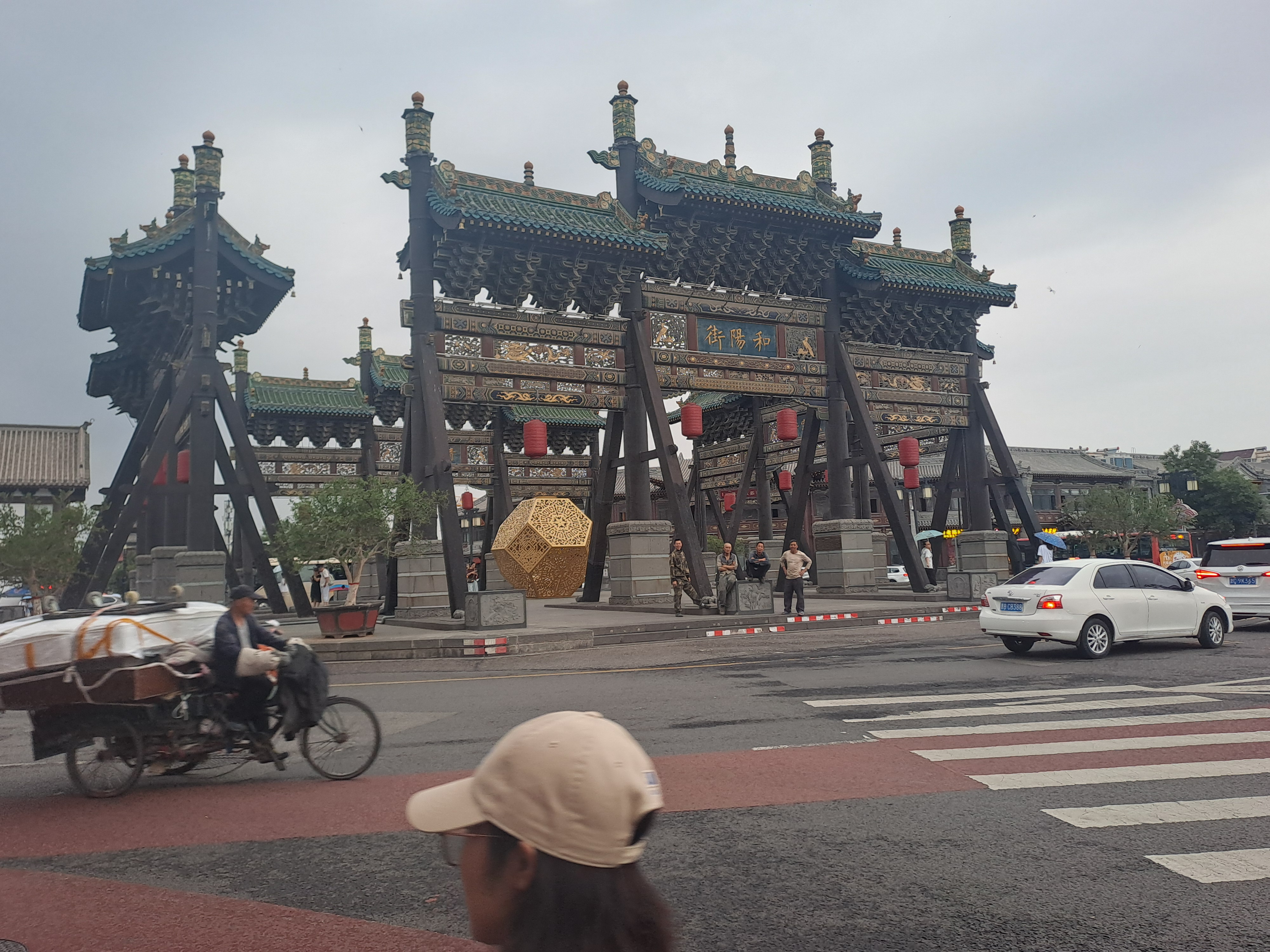
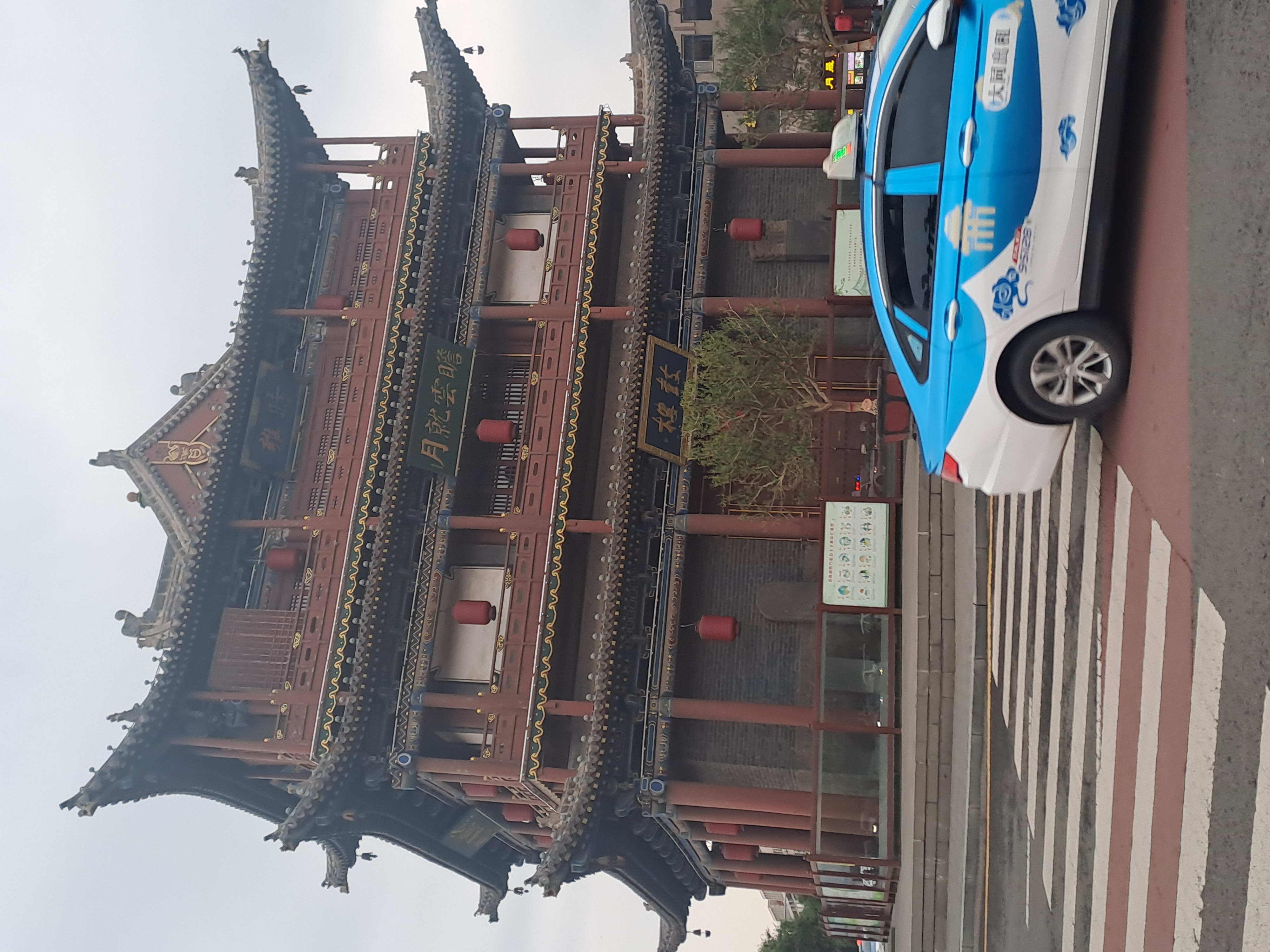
We had a walk on the wide wall enjoying views of the town, including a KFC which rather spoilt the old feel to the wall.
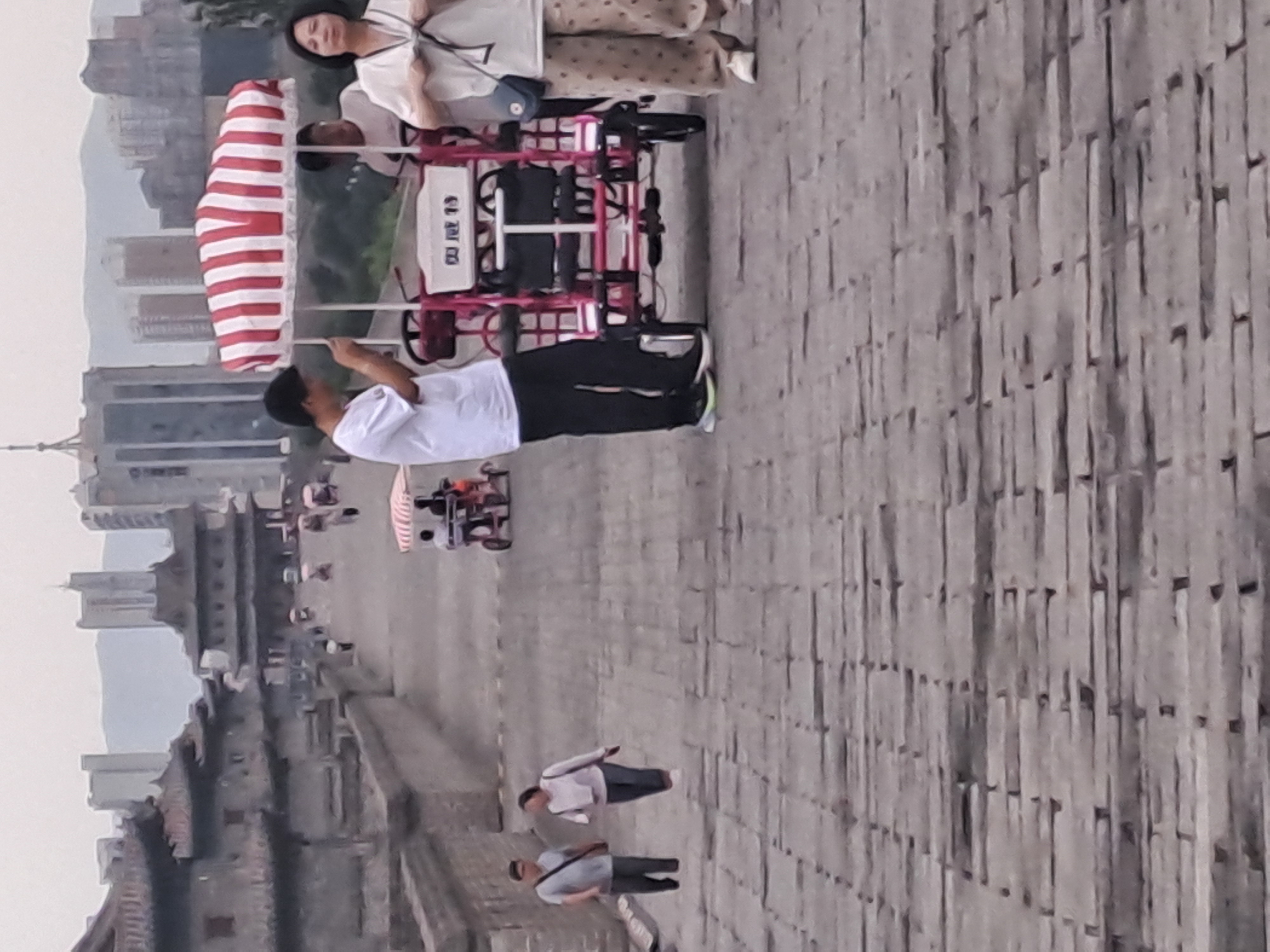
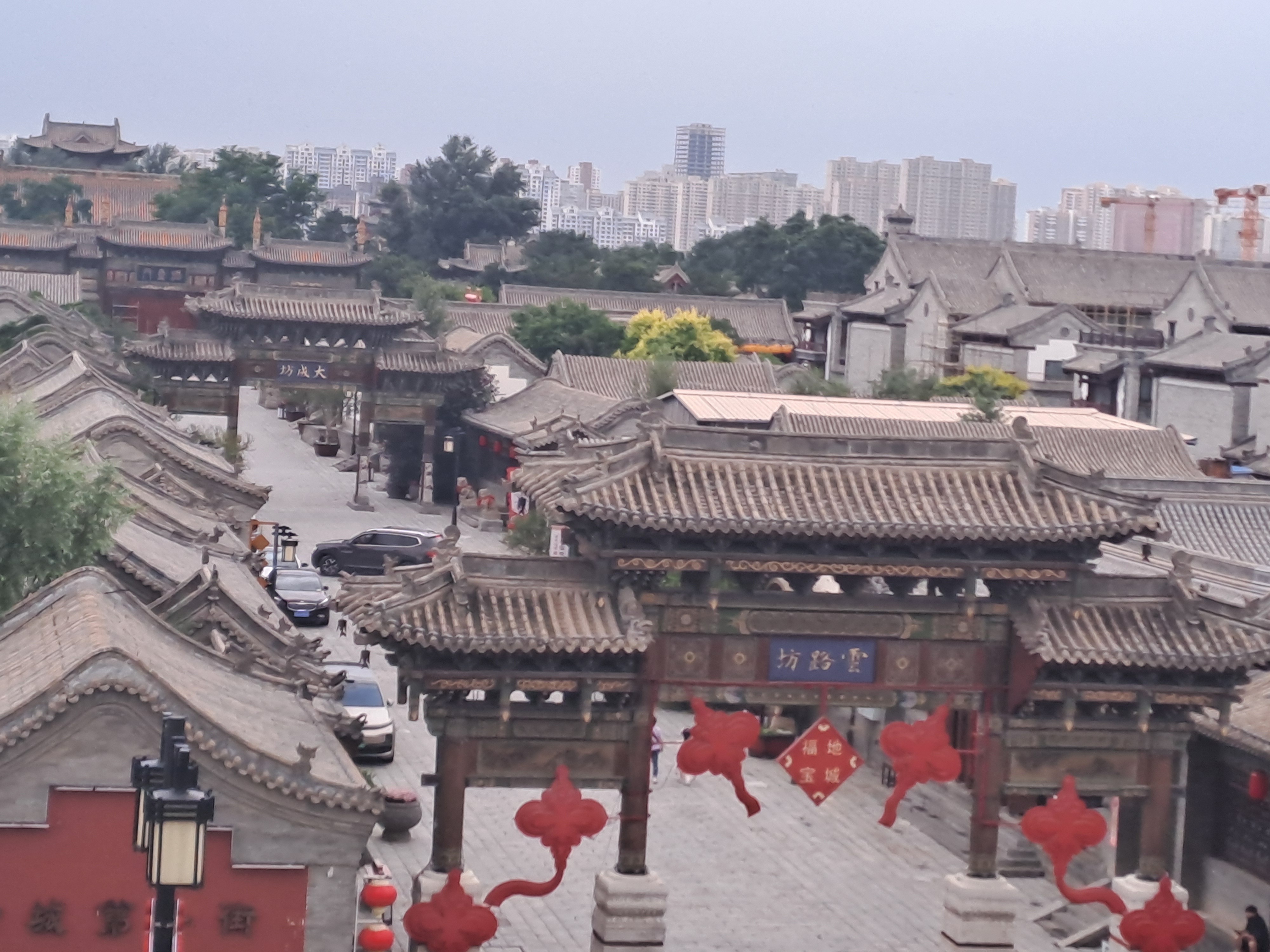
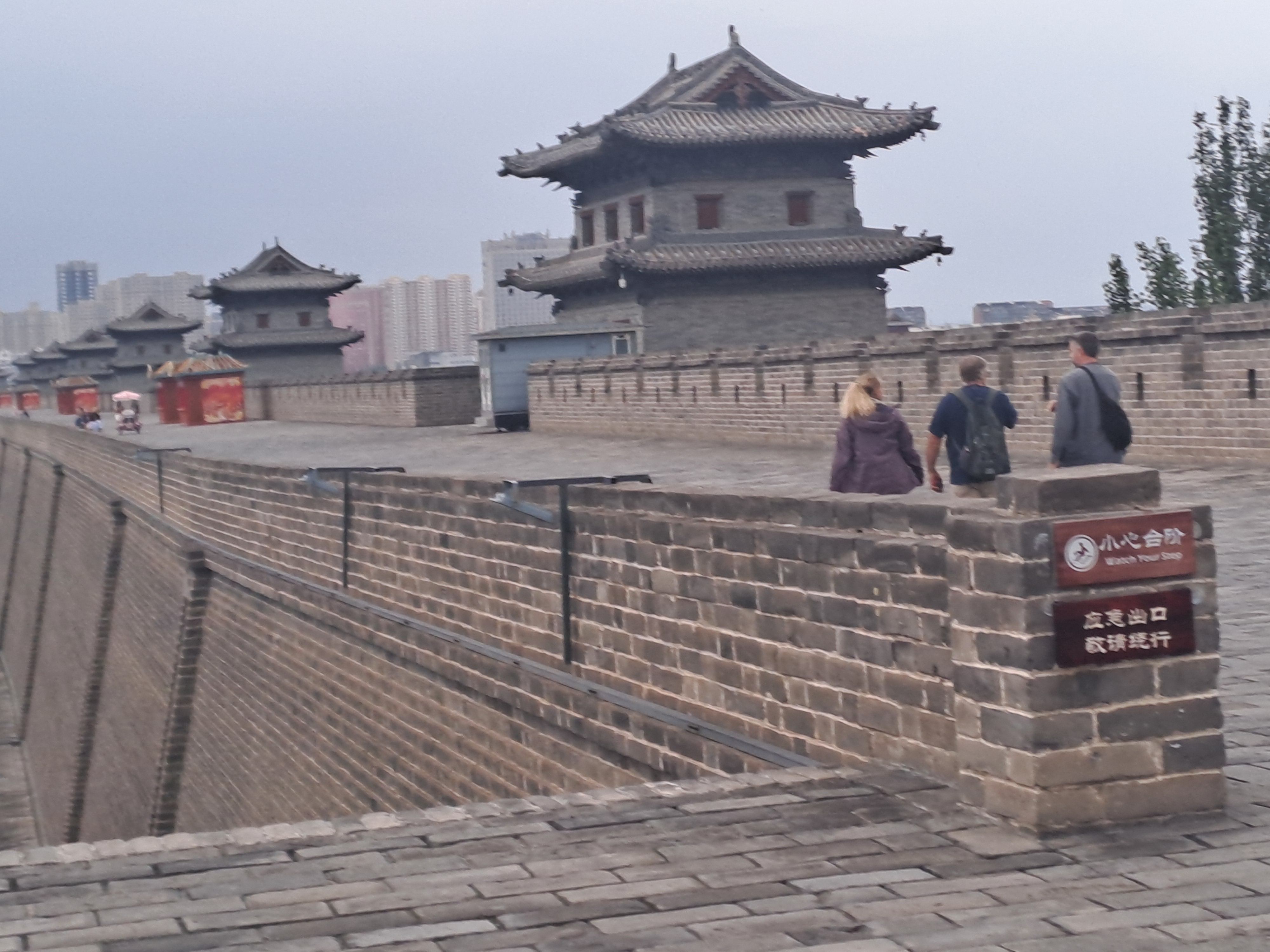

Next was a short journey to Badaling, a tourist spot for the Great Wall. I’ve included a picture of the bedroom to show the random nature of our accommodation, sleeping rough, hostels and then grand rooms. Unfortunately there was a general lack of repair and gradual decline there. It maybe that the tourists have moved on, it may have been the weather but we almost had the wall to ourselves. It wasn’t one of the best days as the mist rather reduced the view, and it gradually descended as we climbed the wall
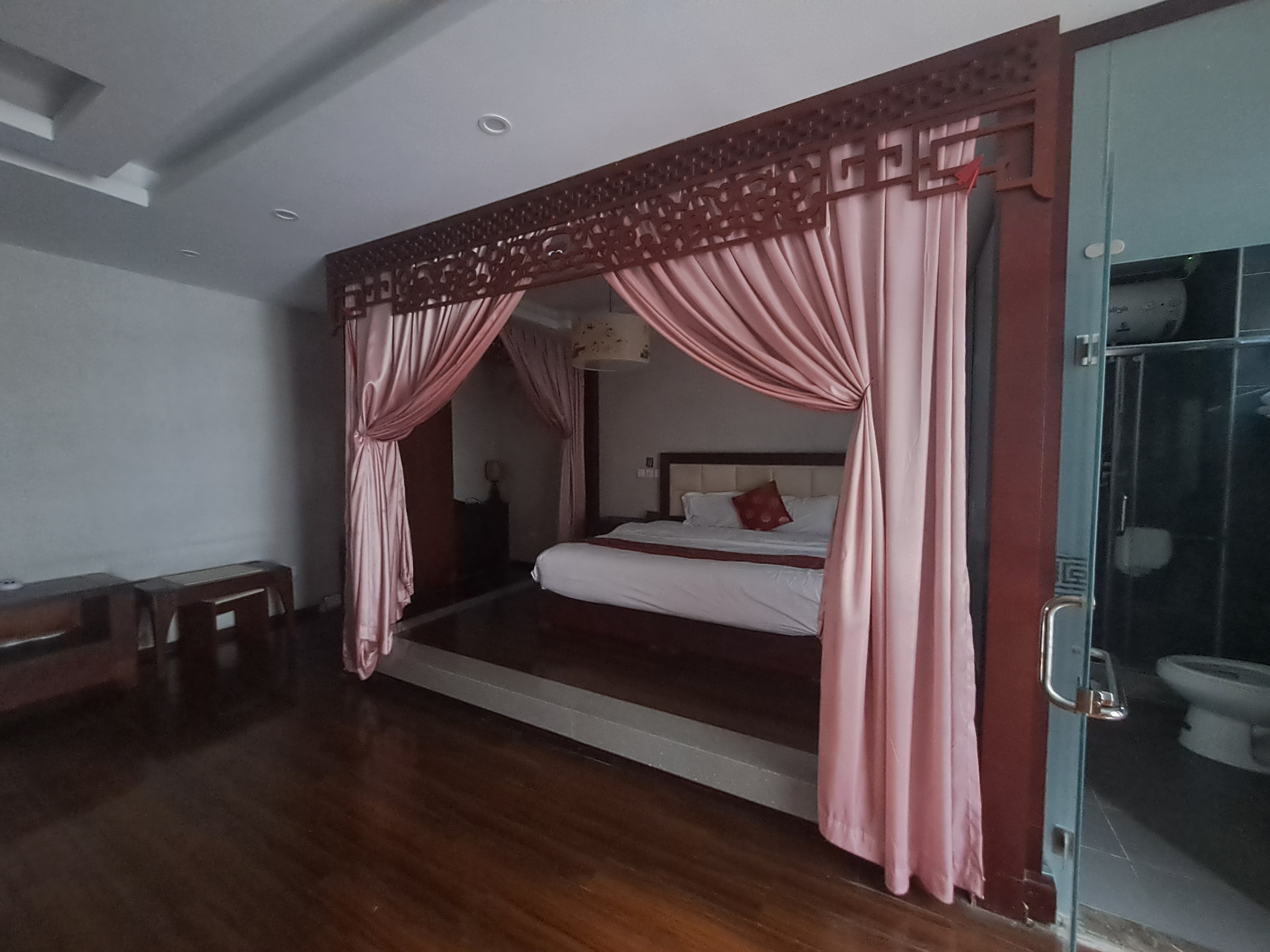



It was shock how steep the steps were as they followed the contour of the hills. They started at three courses of bricks and the paving stone, Climbing up I kept thinking how bad it would look on the way down! We had the luxury of an empty wall. Other travellers told me that in Beijing the wall is packed solid so this was a real opportunity to enjoy it in peace. I dread to think what it would be like patrolling in the depth of winter when snowy and icy.
The road actually cuts through the wall here to get to the hotels.
It was here we took all our luggage out of the the truck and said goodbye to Mariana, out home for the last few months. We decided at this point to leave our camping gear as a donation to be given at Kathmandu as realistically it won’t fit in now we’re not wearing our cold weather clothing and will certainly push us over our luggage weight limit for the flight to South Korea.
Maybe now is a good time to remark on the daylight hours. Because China is all one time zone they are very different across the country. At the start we were shocked by how late it got light, getting up in the dark to do camp breakfast and how late it was light as daylight was around 8am to 10 pm with shops open very late at night. Now it is light by 5am and gets dark around 7pm. Shops tend to close a lot earlier.

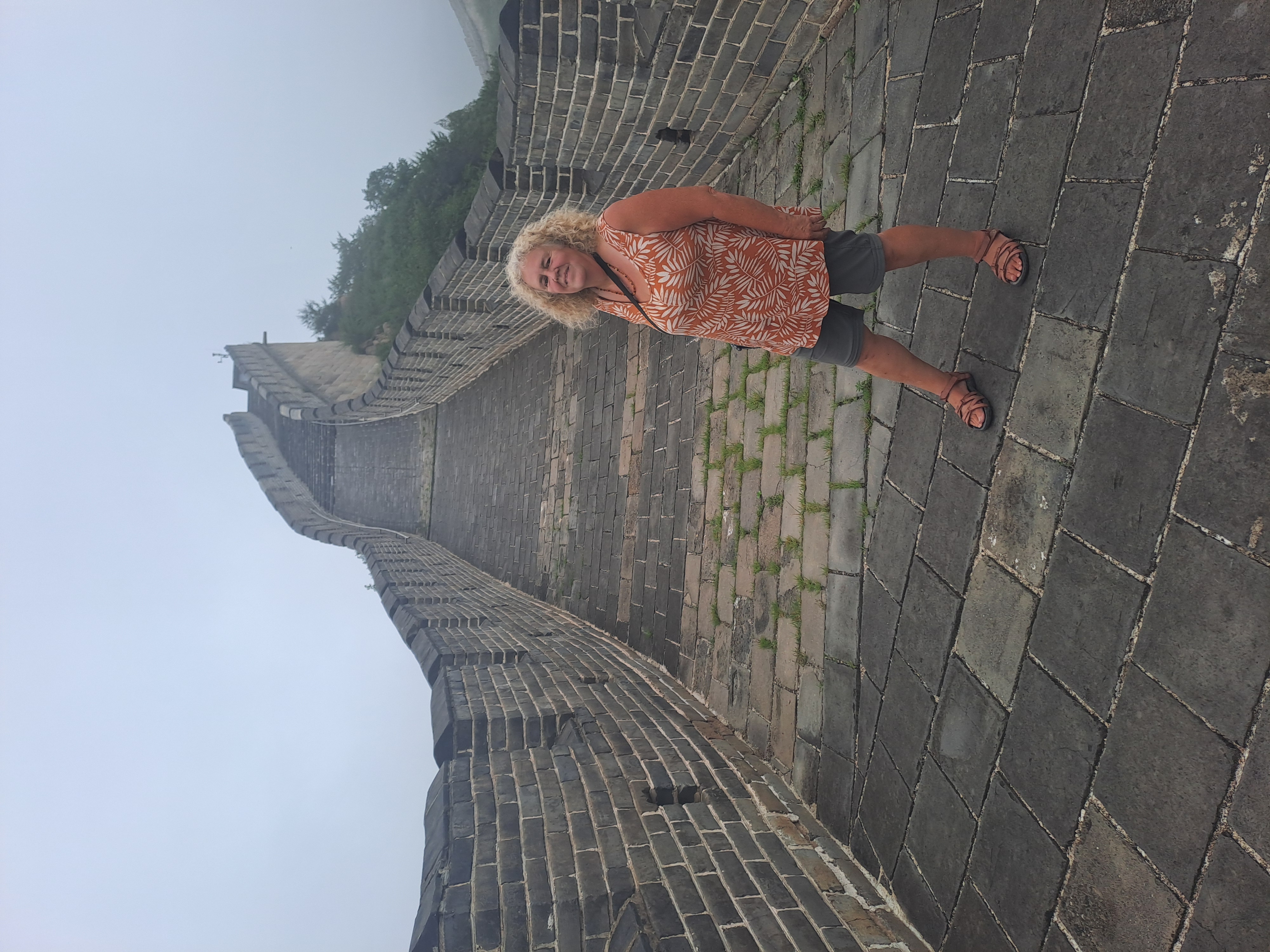
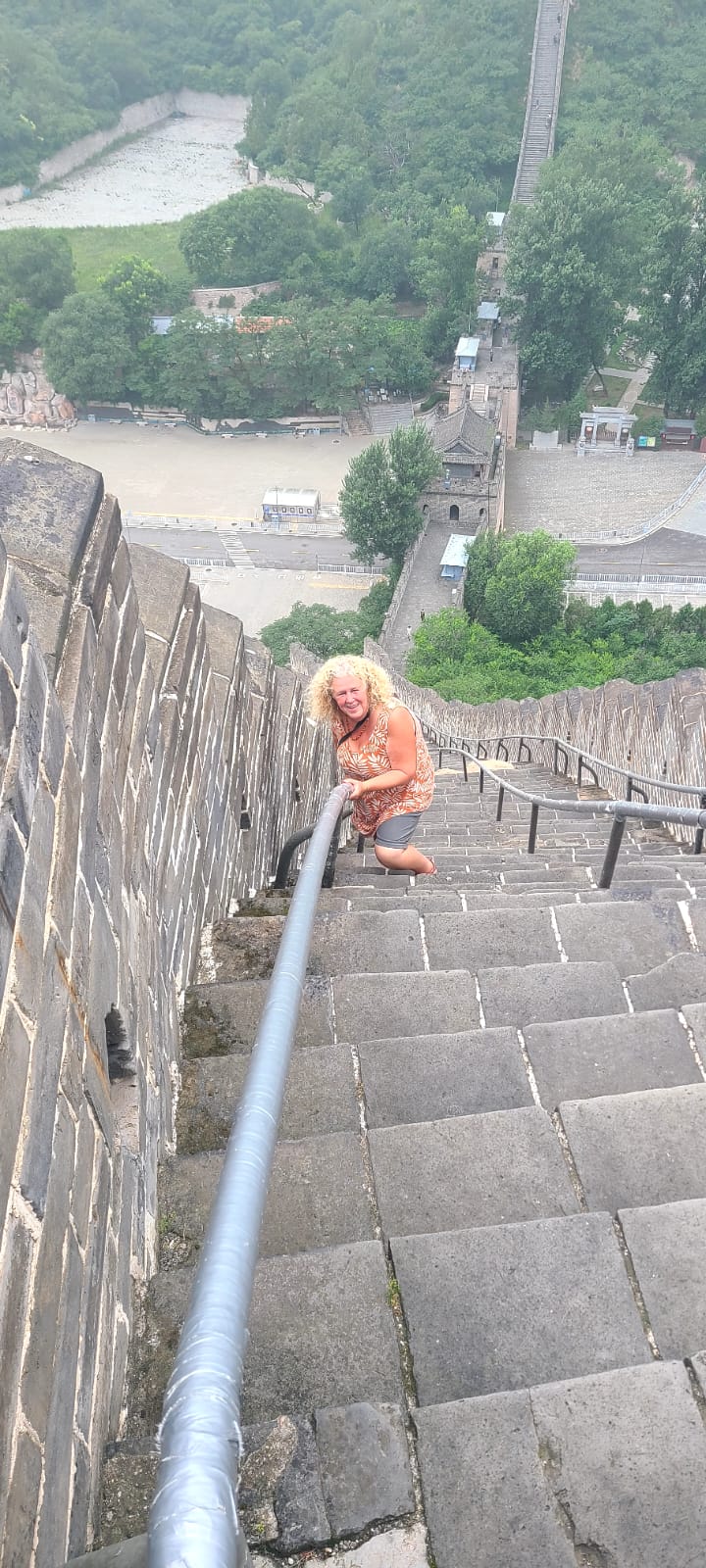
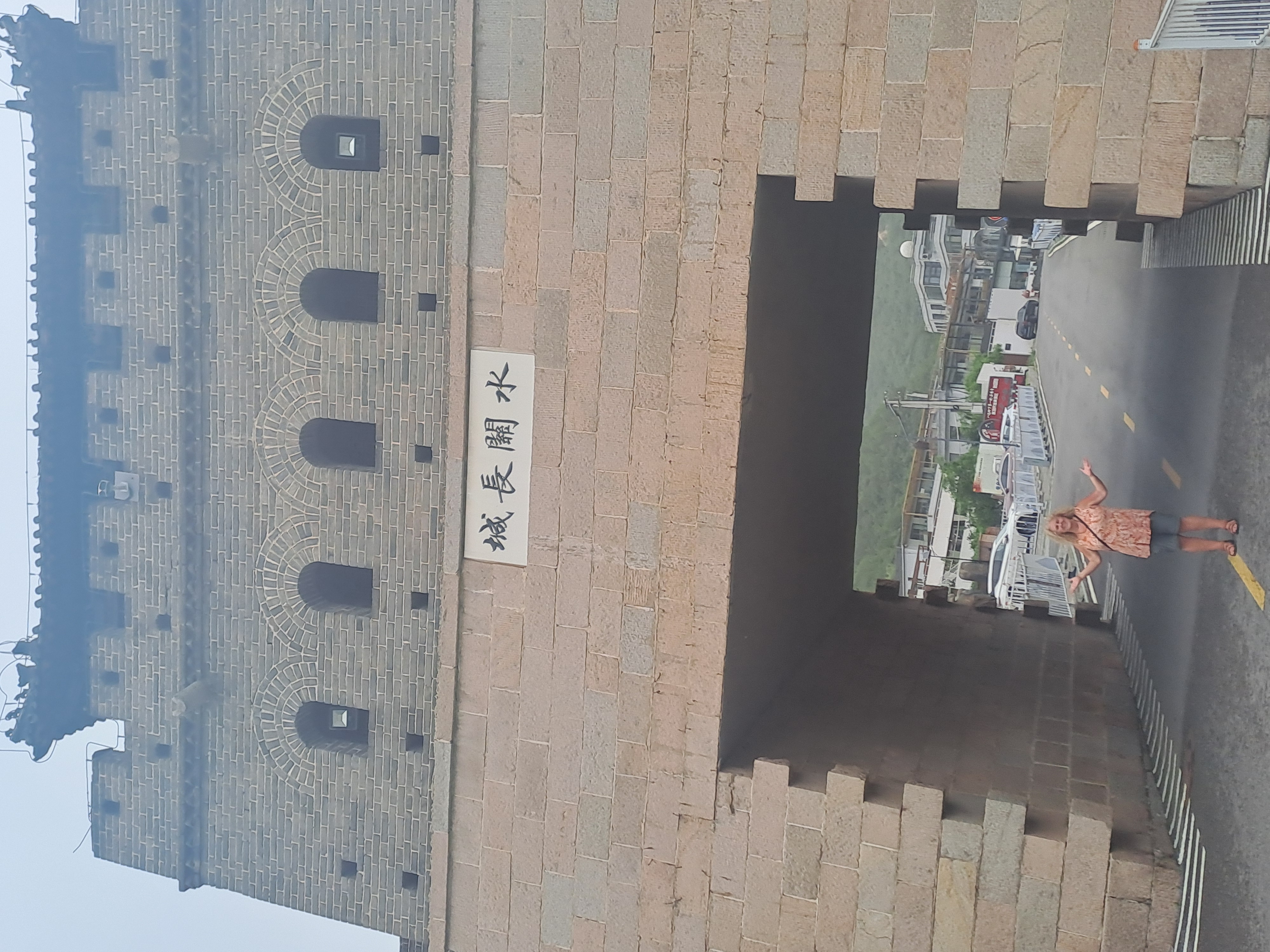
We taxied the next day to Beijing for the final night of our Istanbul to Beijing tour and the start of our Beijing to Tokyo tour. With time on my hands I visited the Lhama temple nearby with our guide. This was a series of temples and a museum of clothing and artefacts given to the temple. Our guide explained that they lit three incense sticks for the god above, the god on earth, and the god below. She then prayed in four directions while bowing.


She also explained about the pairs of lions which are either side of doorways everywhere. The right hand one is the male and has a ball under his foot to represent power. The female lion has a cub on its back under her foot to represent nurturing.
She also explained that this was where the emperor had been born. It later became a temple.



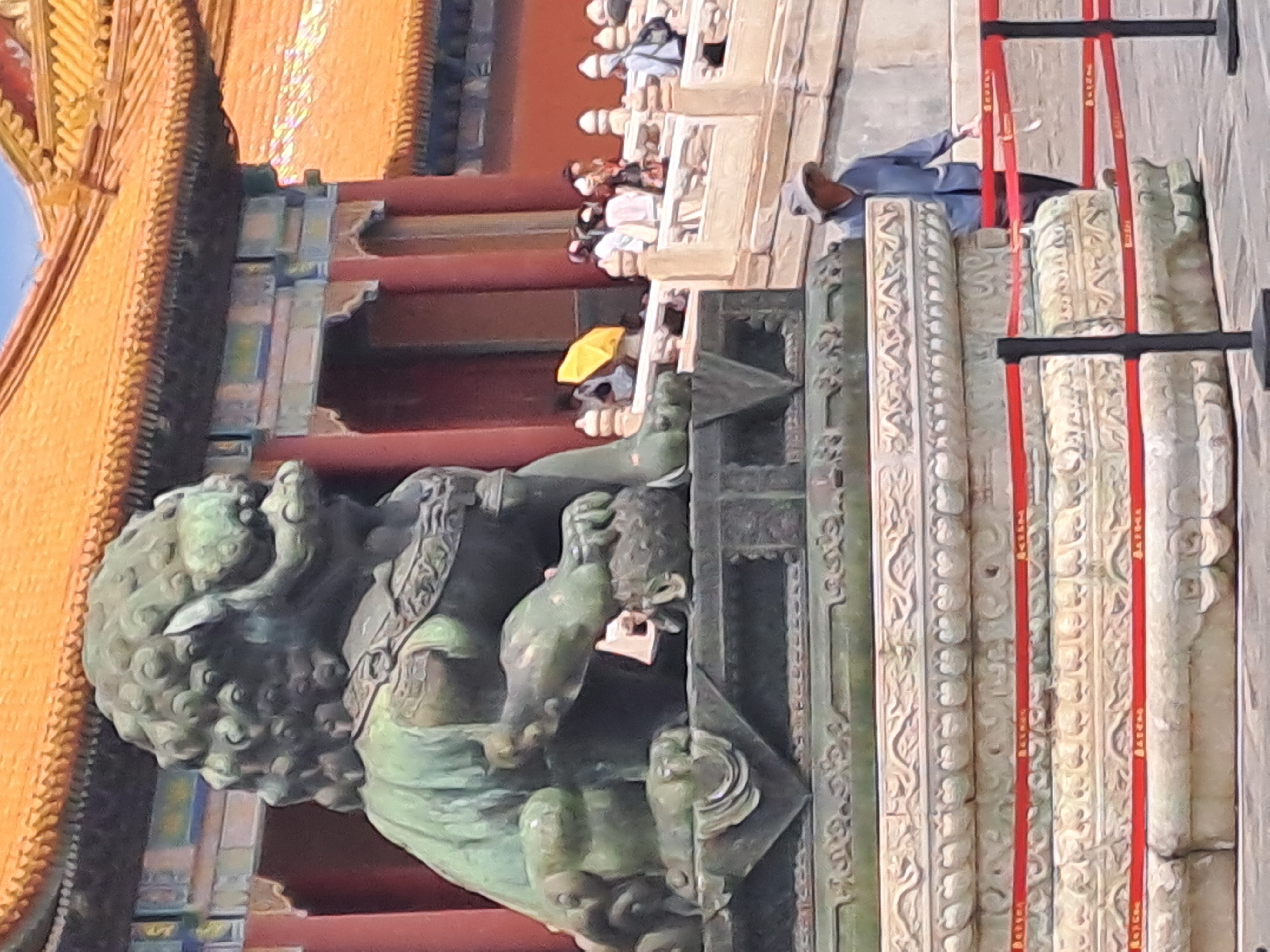
Our final dinner – crispy duck pancakes was an early evening as we had an early start the next day to see the big four sites of Beijing something a group of us had organised earlier as most people had an extra day or so in Beijing.
Thankfully all the travelling was in an air conditioned coach as the heat and humidity had really been catching up with us since we left the desert.
We started with the summer palace the building of this palace was an enormous undertaking including a large manmade lake and a hill – longevity hill built from the soil evacuated to make the lake. It includes over 3,000 ancient Chinese buildings. Its origins were almost 1,000 years ago when the emperor moved the capital to Beijing.. It was added to by emperors over the next few centuries.




The design is built around Chinese mythology and also the principles of Taoism and balance. Here we were introduced to importance of rocks in Chinese gardens. Large rocks were hunted and moved to place in gardens. We were introduced to the “homewecking” rock. It was given this name as it was originally found by a rock collector who sought to move it to his garden. He built a road to the rock and wells along the road to that in winter water could be drawn and poured on the road to make it icy so the rock could be slid along it. However his money ran out and he had to abandon the rock.
When the emperor decided to move the rock it would have to dismantle the Palace doors. His mother stopped him as she believed the rock to be bad luck. However he told her that it resembled a magical healing mushroom and would be a blessing.
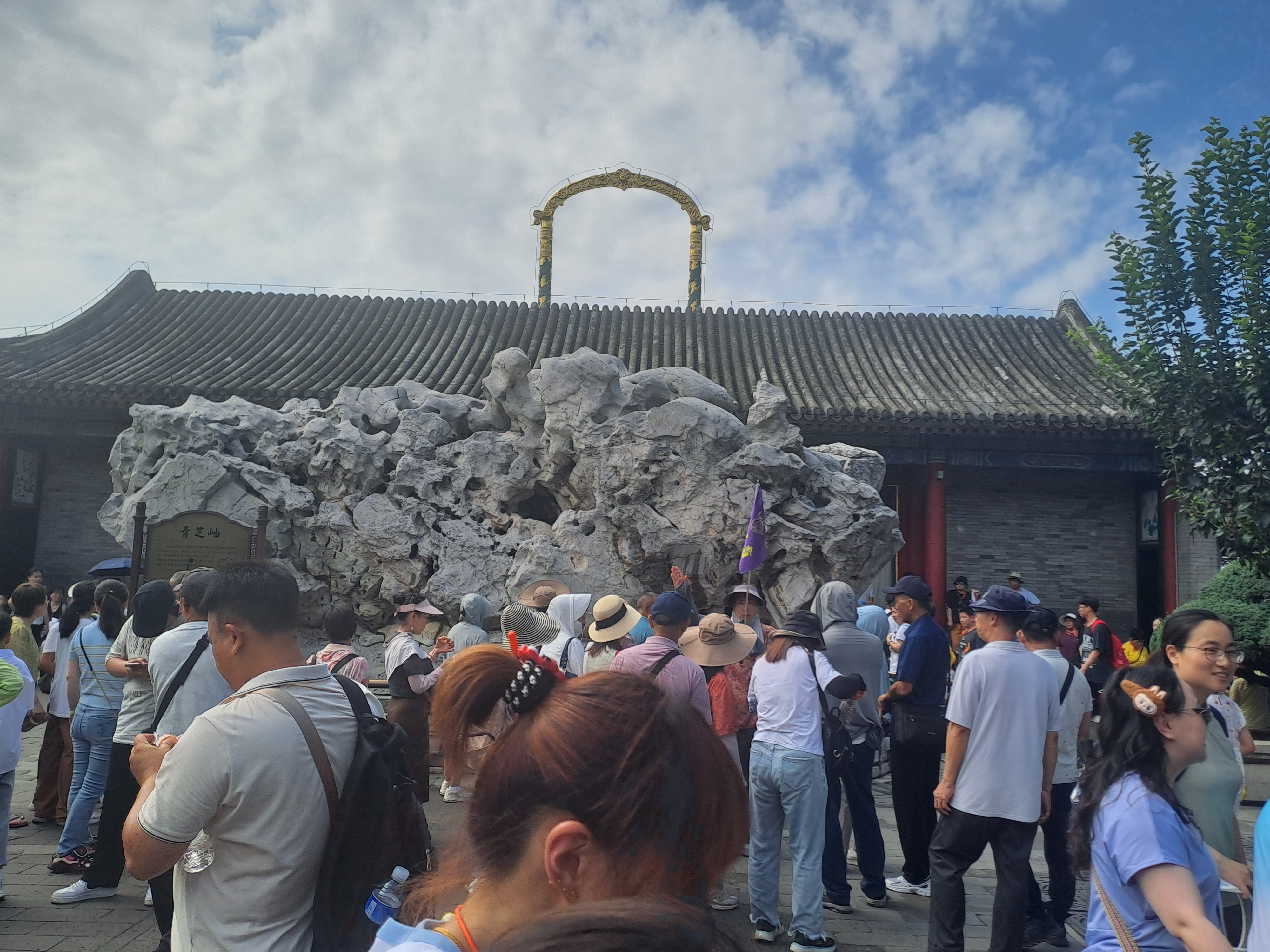
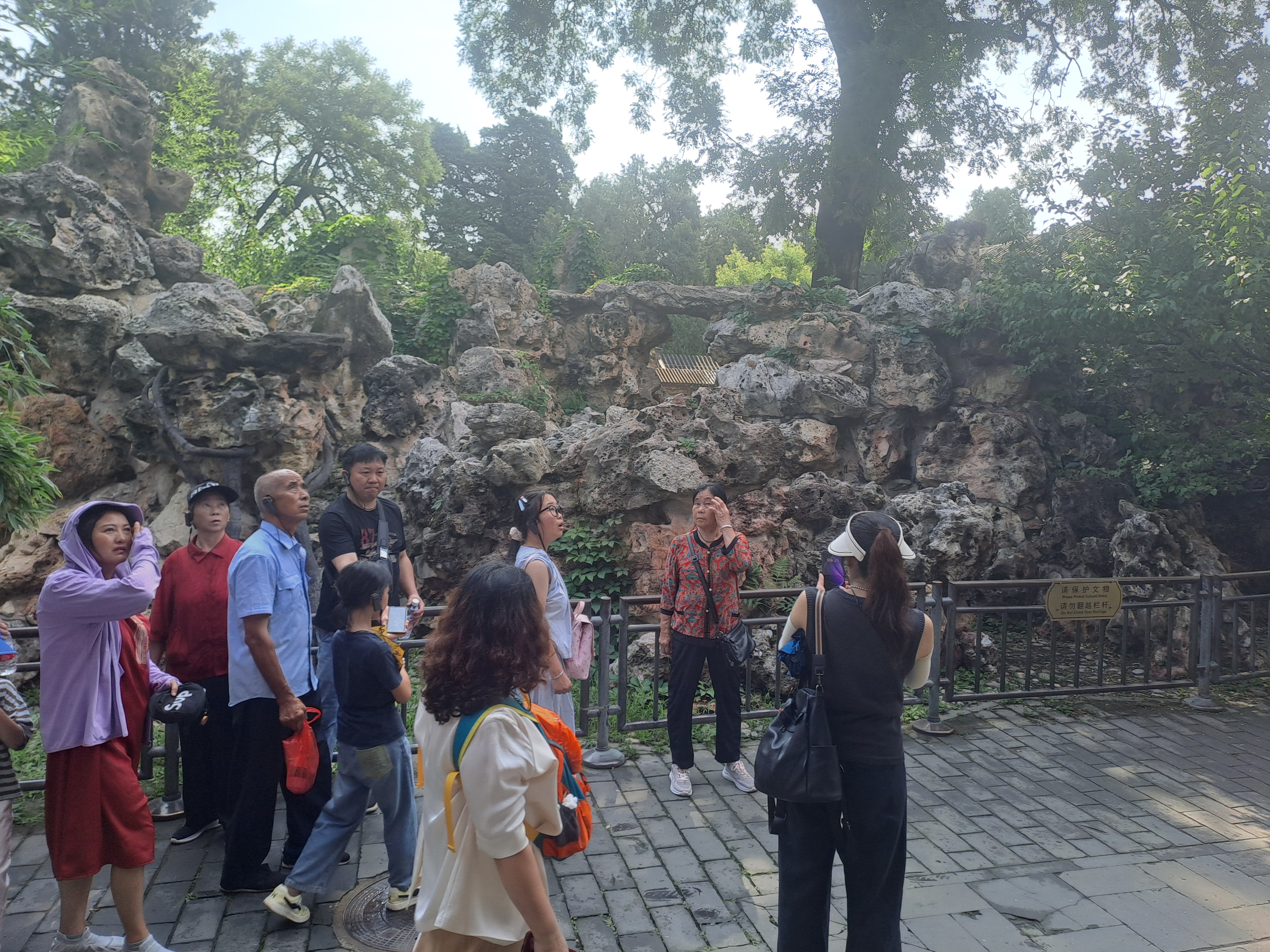
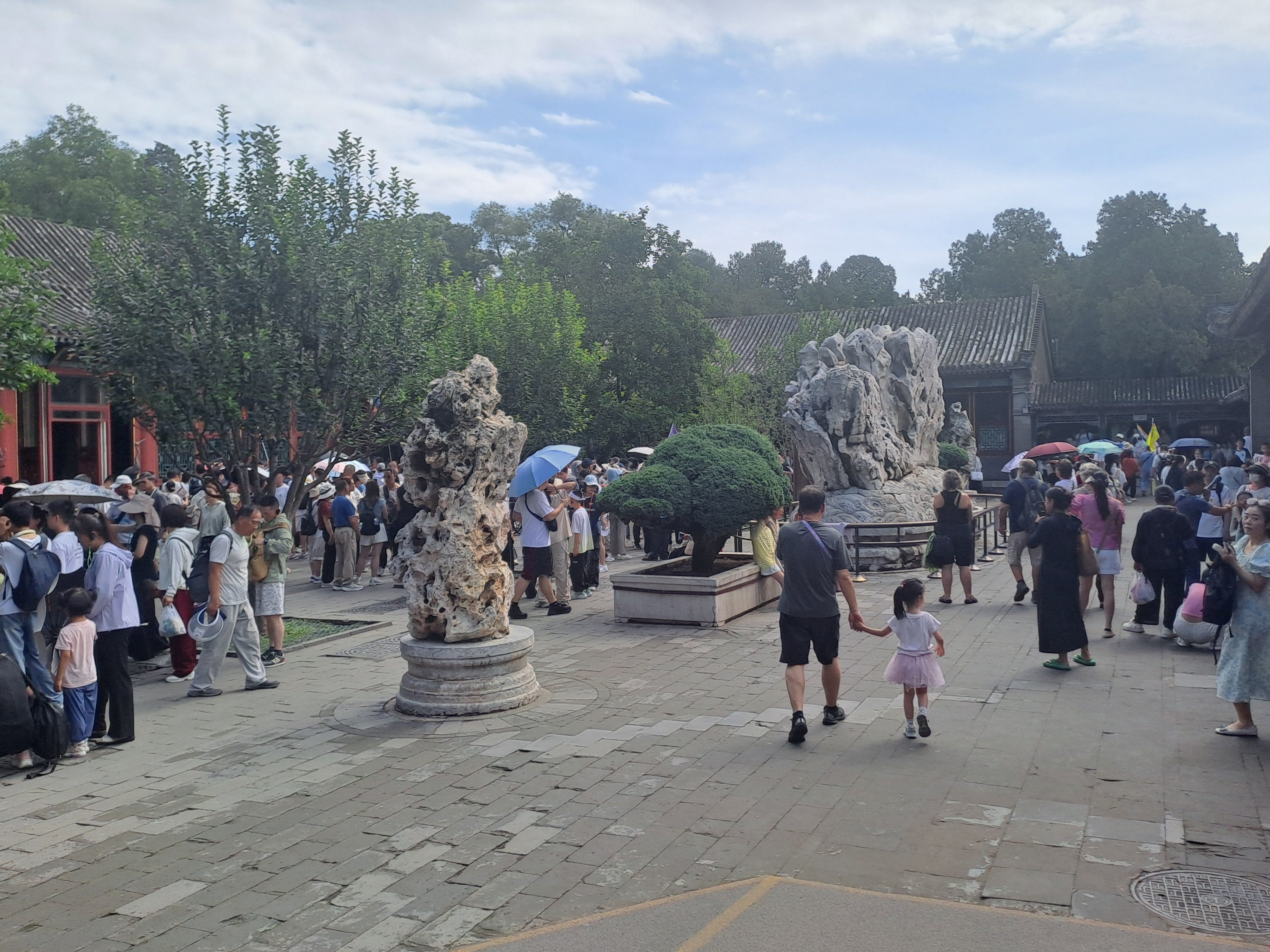

We saw the stone boat (landlocked) and took one of the boats across the lake to return to our transport.
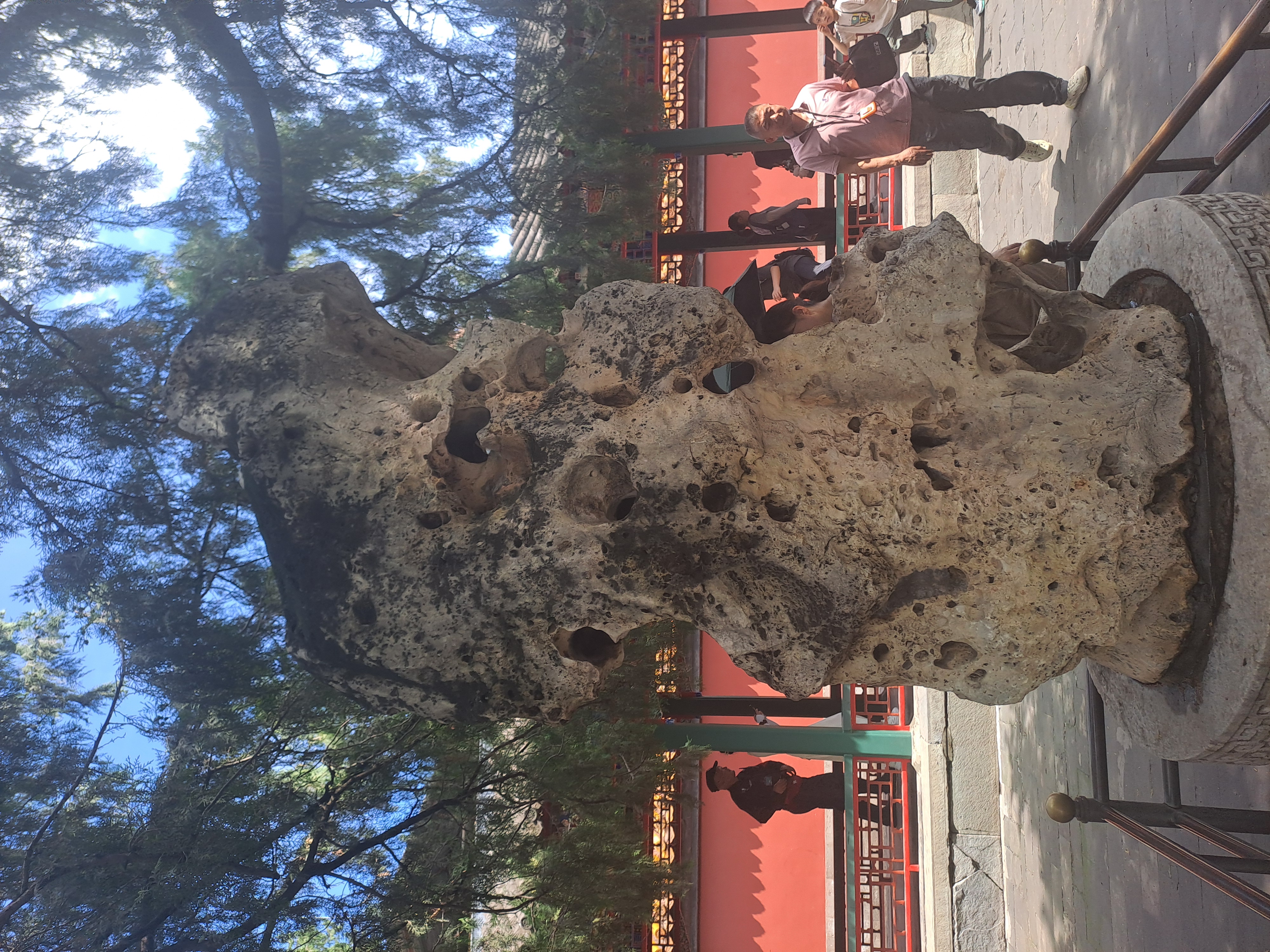


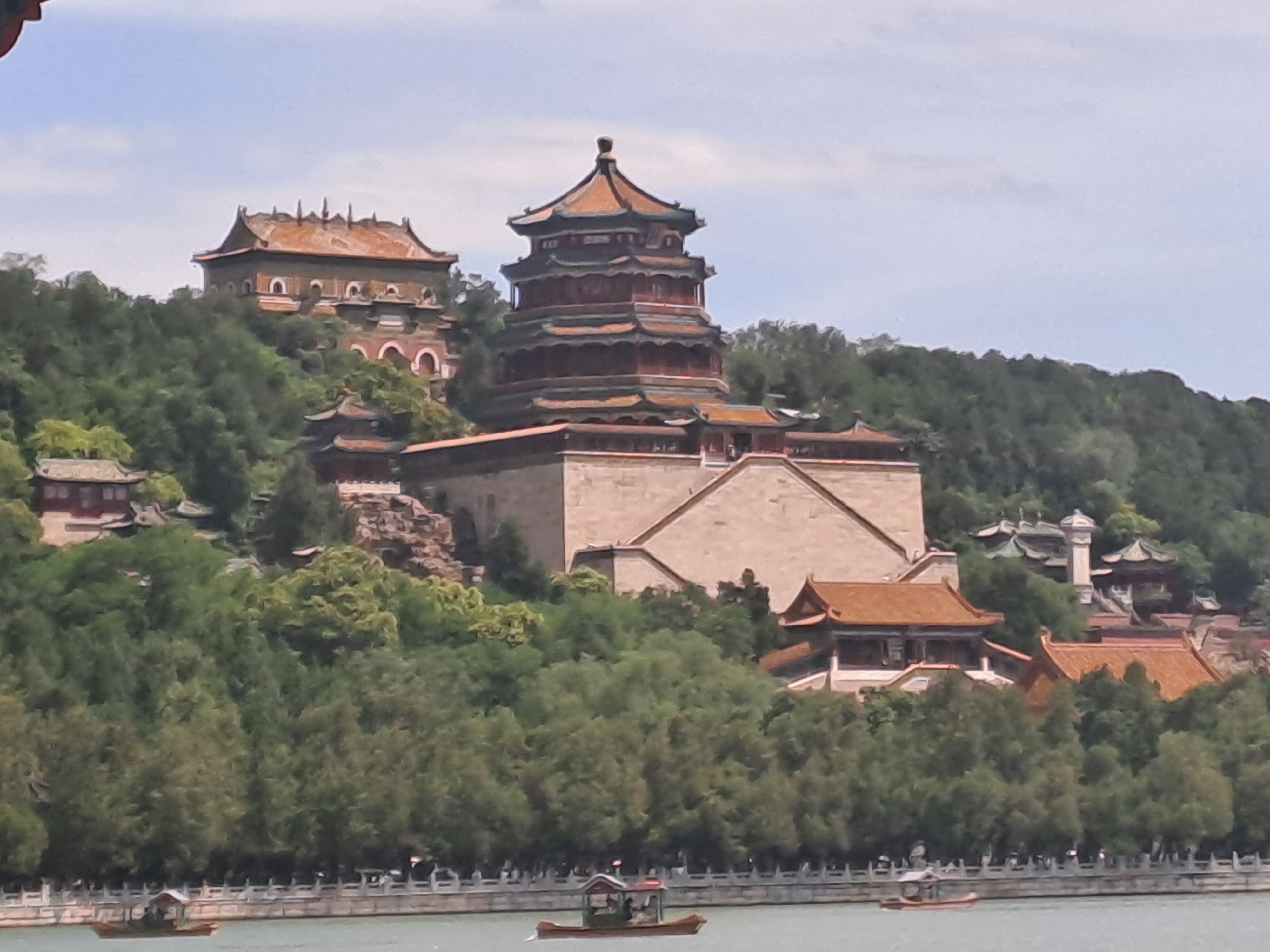
Our next stop was Tiananmen Square famous now as the site of an incident in 1976 when mourners were forced out of the square after the death of Premier Zhou Enlai and a massacre in 1989 after student protests. The authorities take no chances these days and admission is only by ticket and passport with tickets having to be booked in advance.
We were warned not to take any written material in with us as it would all be translated and checked and that would delay us. Two of our fellow travellers- not on our tour that day were stopped. One because her t-shirt had 64 as part of the logo, this could relate to the massacre date of 4th June. They gave here a plain white t-shirt and put hers in a bag where it had to stay. The other was carrying his leaving card on a poster from the Stalin museum in Georgia and had to wait while all the comments on it were translated.
Understandably the square is very empty. It has the Chairman Mao exhibition and the party headquarters there. On the far side is the forbidden City.
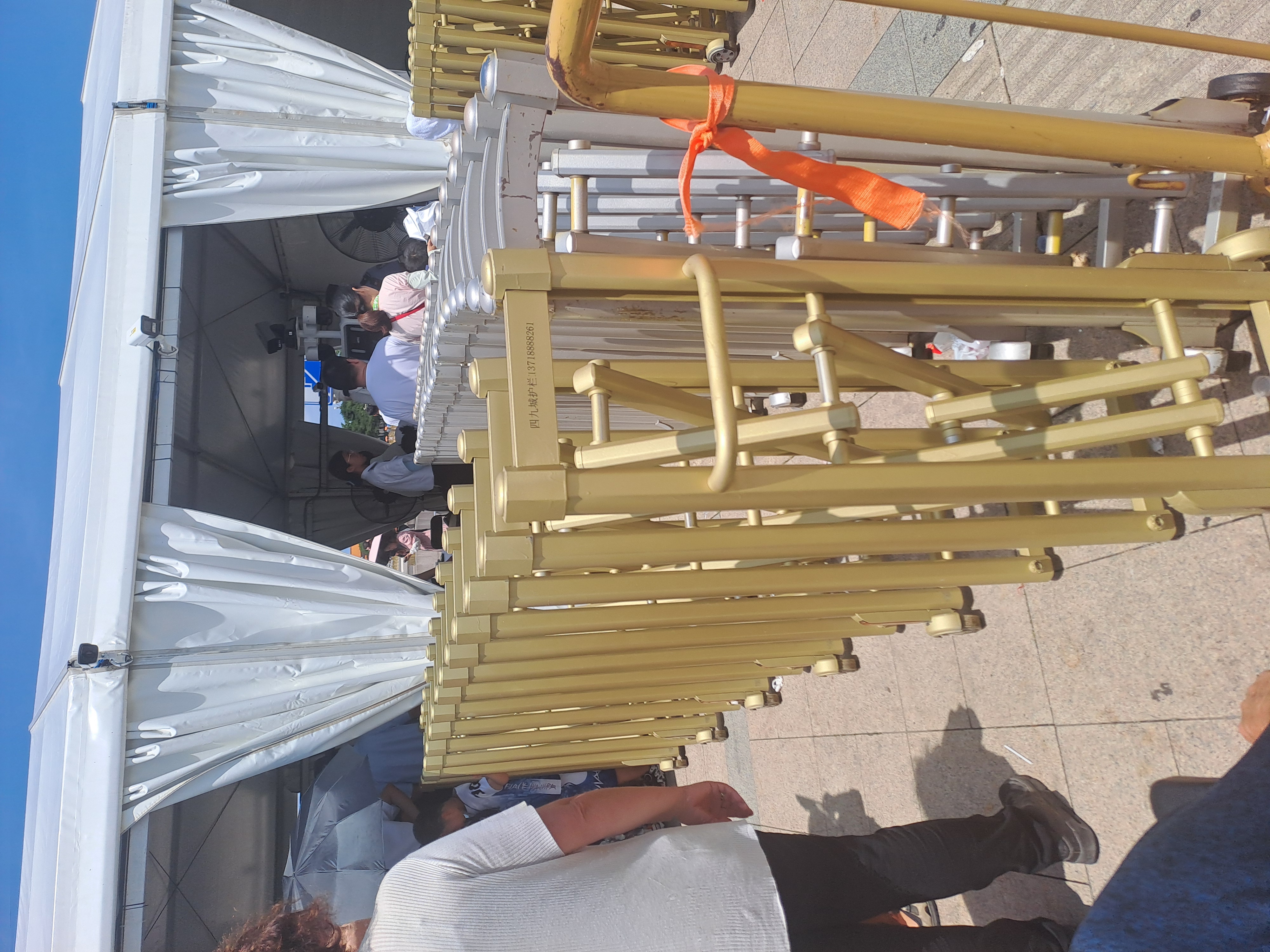



This complex was the residence of 24 Chinese Emperors, and the centre of power from 1420 to 1924. Our guide explained a lot of the planning of the city in terms of Taoism and the male and female areas balancing each other Feng Shuai was an important part of this. The square her had to be big enough for parades of troops.
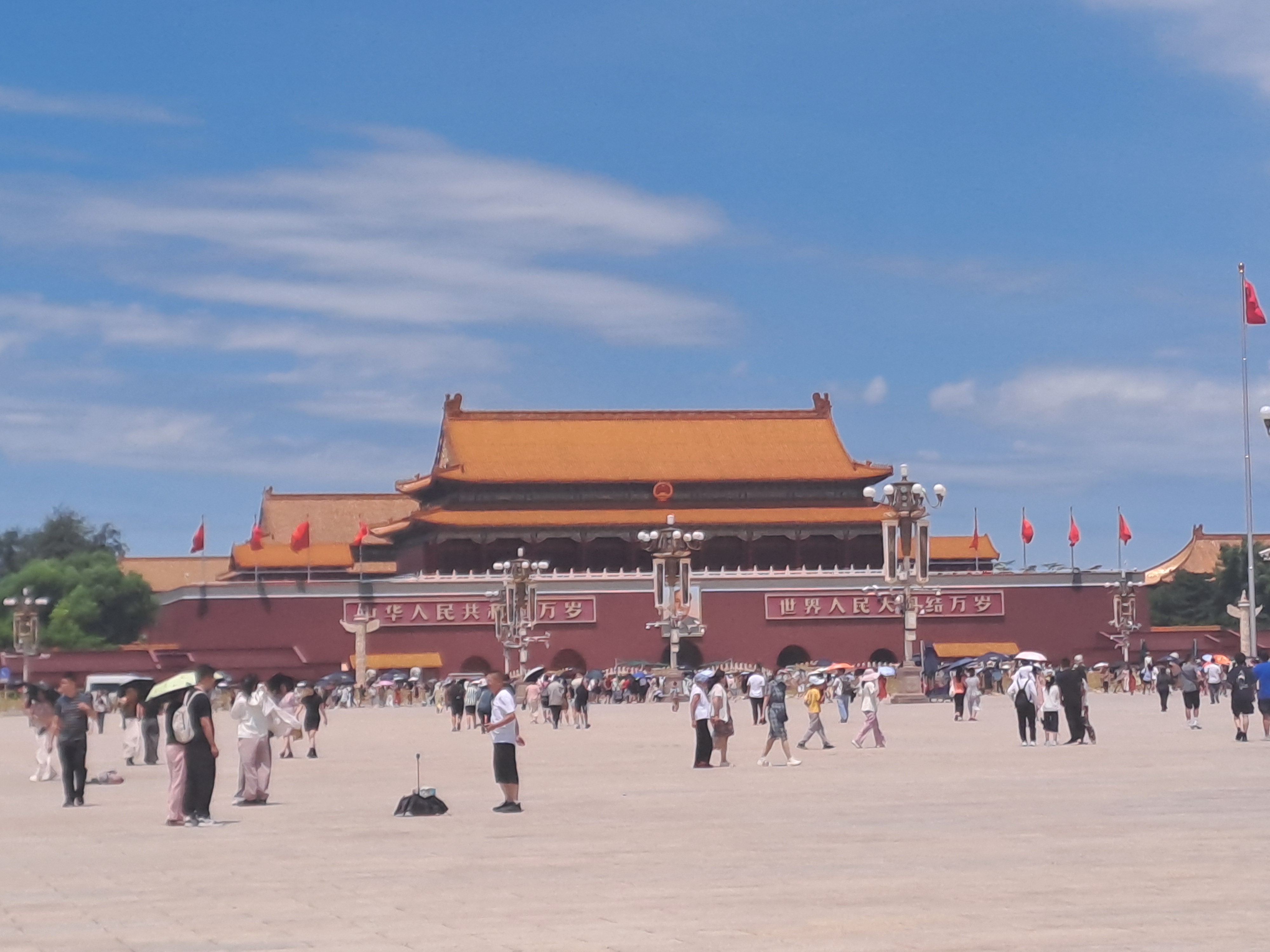



The garden here, like other gardens is mainly trees, rocks and water. Any flowers appear to be an afterthoughts added annually.



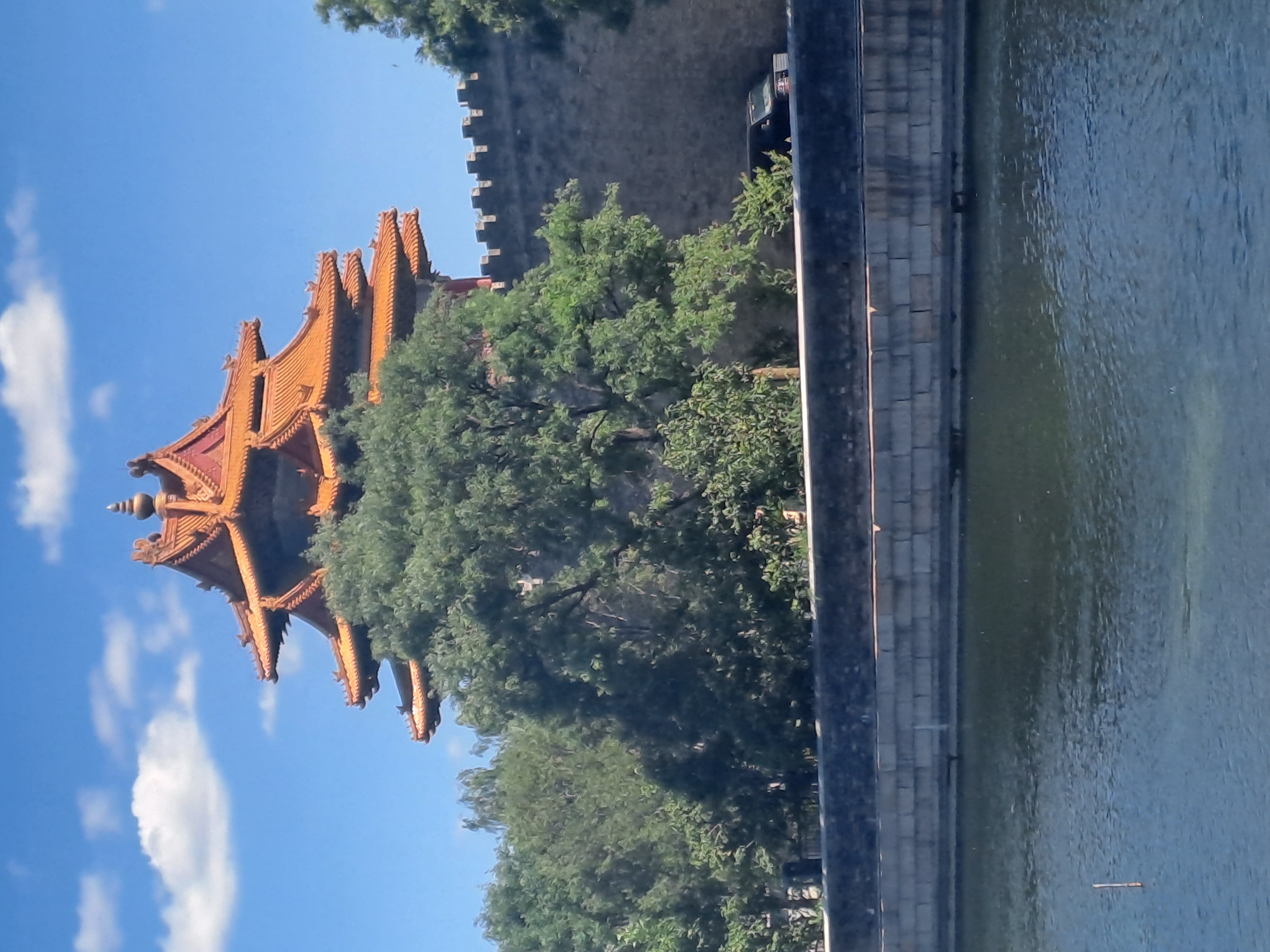
The last item on our tour was the Temple of Heaven where the emperor would go to pray annually for a good harvest. Everything in the temple is symbolic.
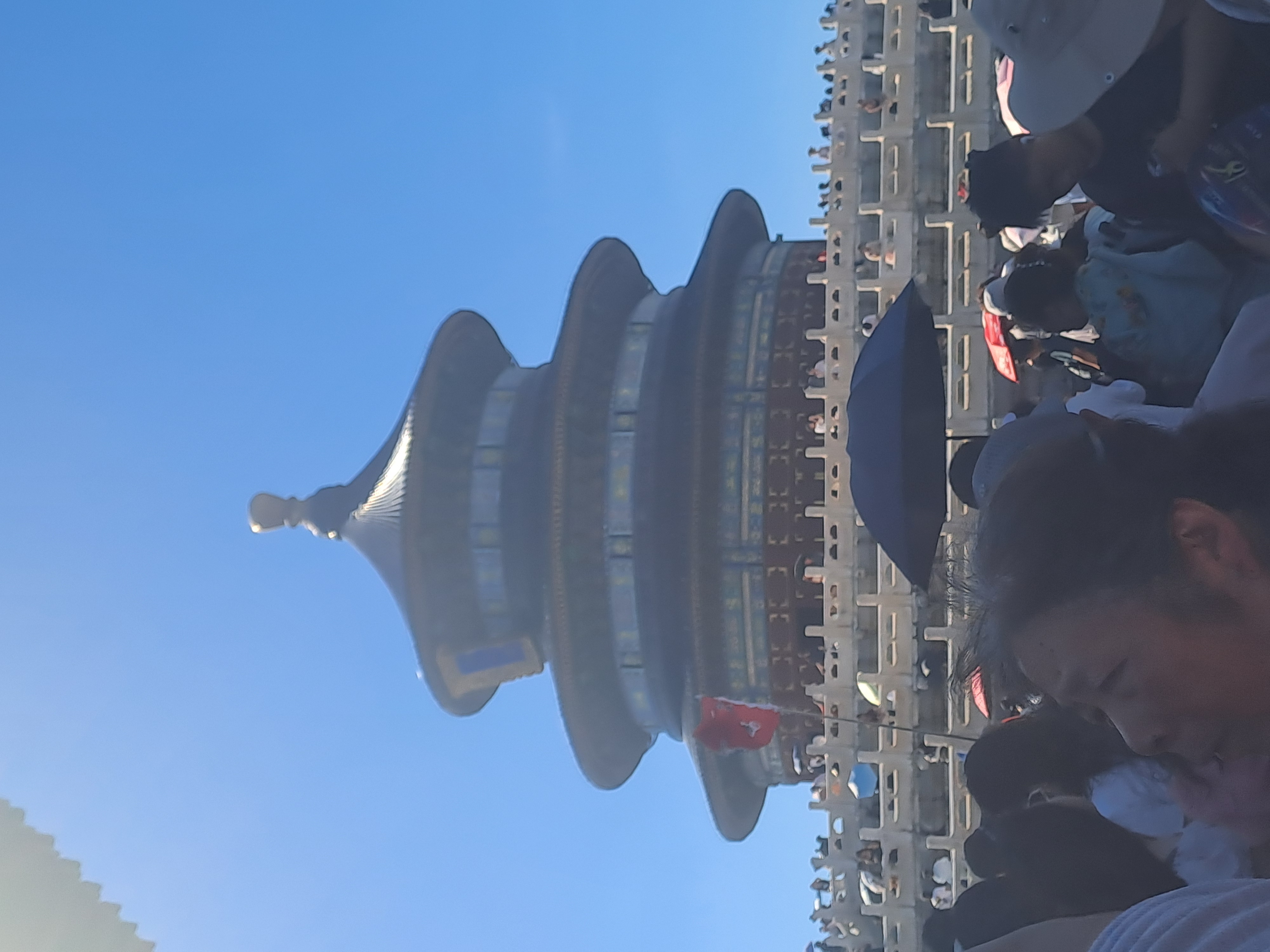
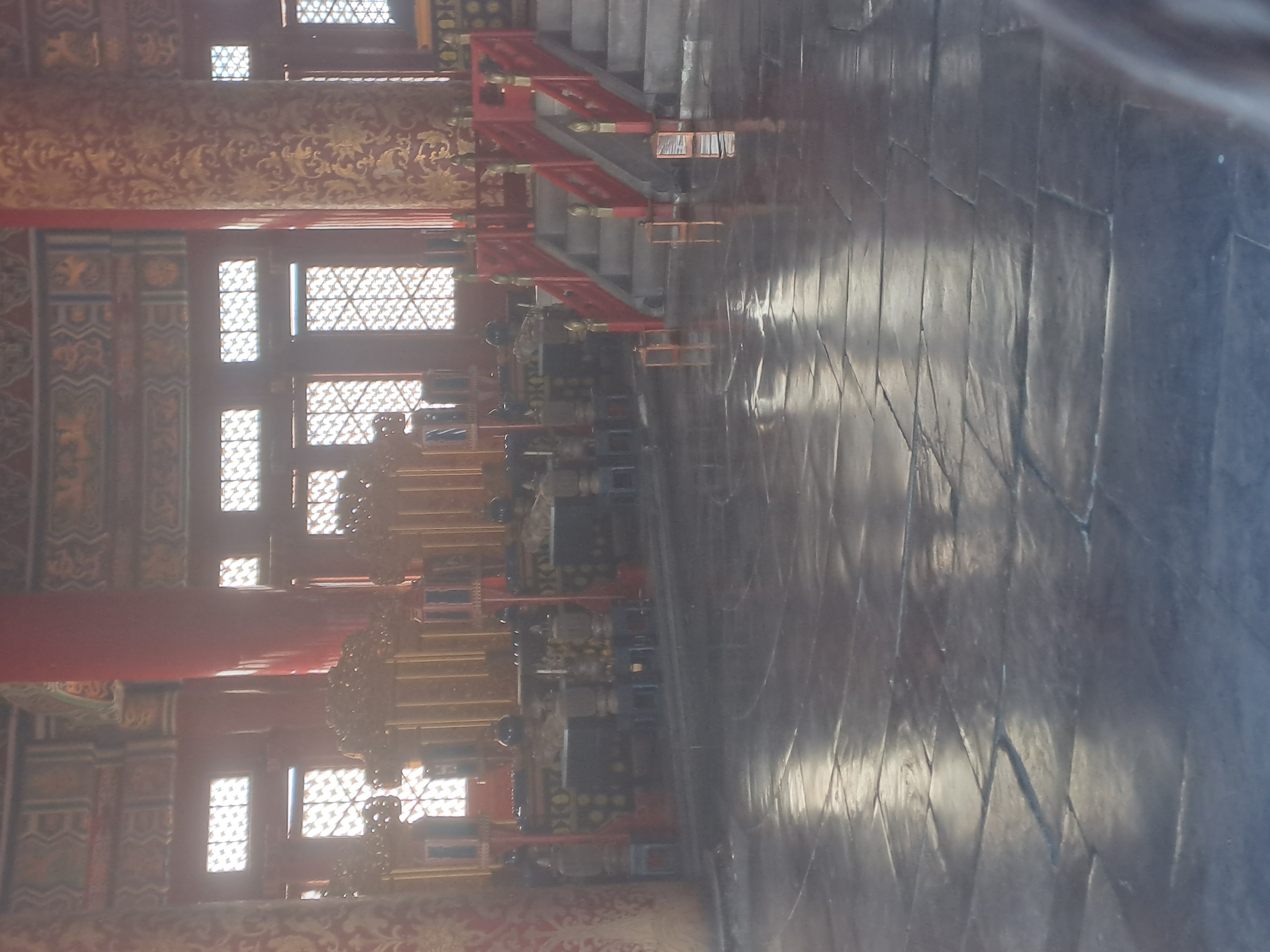
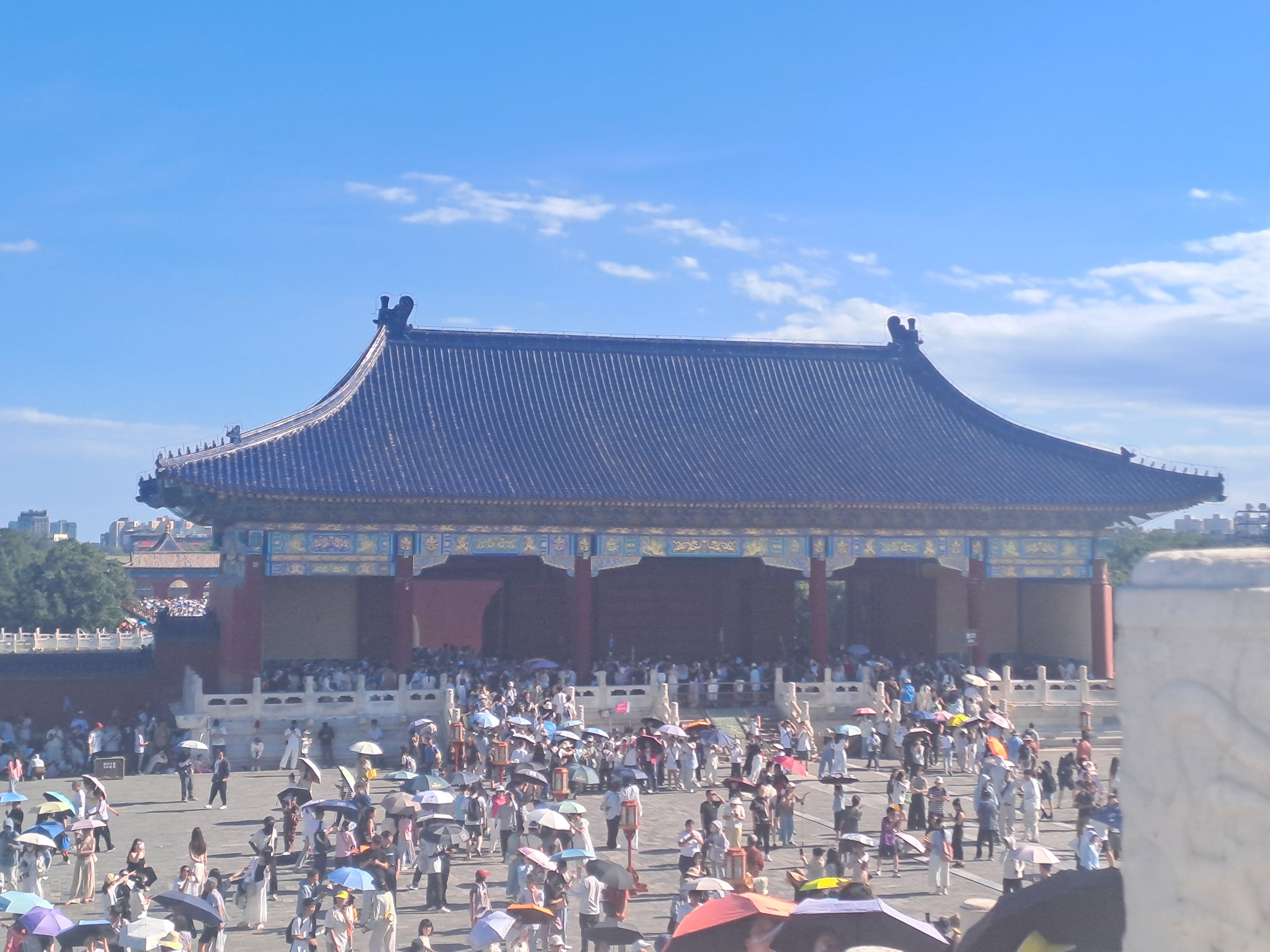
It was sad to say goodbye to people we have been living with for the last three and a half months. Hopefully we’ll see a few of them again. Only three of the group are continuing on to Tokyo with us, with more joining along the way.
